Throughout history, certain items and practices have woven themselves into the fabric of daily life, only to fade away with the advent of new technologies and cultural shifts. These relics, once staples of everyday existence, now evoke a nostalgic charm and a longing for simpler times.
Here, we explore the top items that were once integral to everyday life but have since vanished from common use. Each entry reflects on the transient nature of technology and culture, revealing the journey of human progress and the forgotten norms of past decades.
Pay Phones

Once a common sight on city corners and in malls, pay phones were crucial for making calls on the go before the age of mobile phones. They provided a lifeline in emergencies and a point of contact for those without home service. Today, the near-universal ownership of cell phones has rendered these once-ubiquitous booths virtually obsolete.
Video Rental Stores
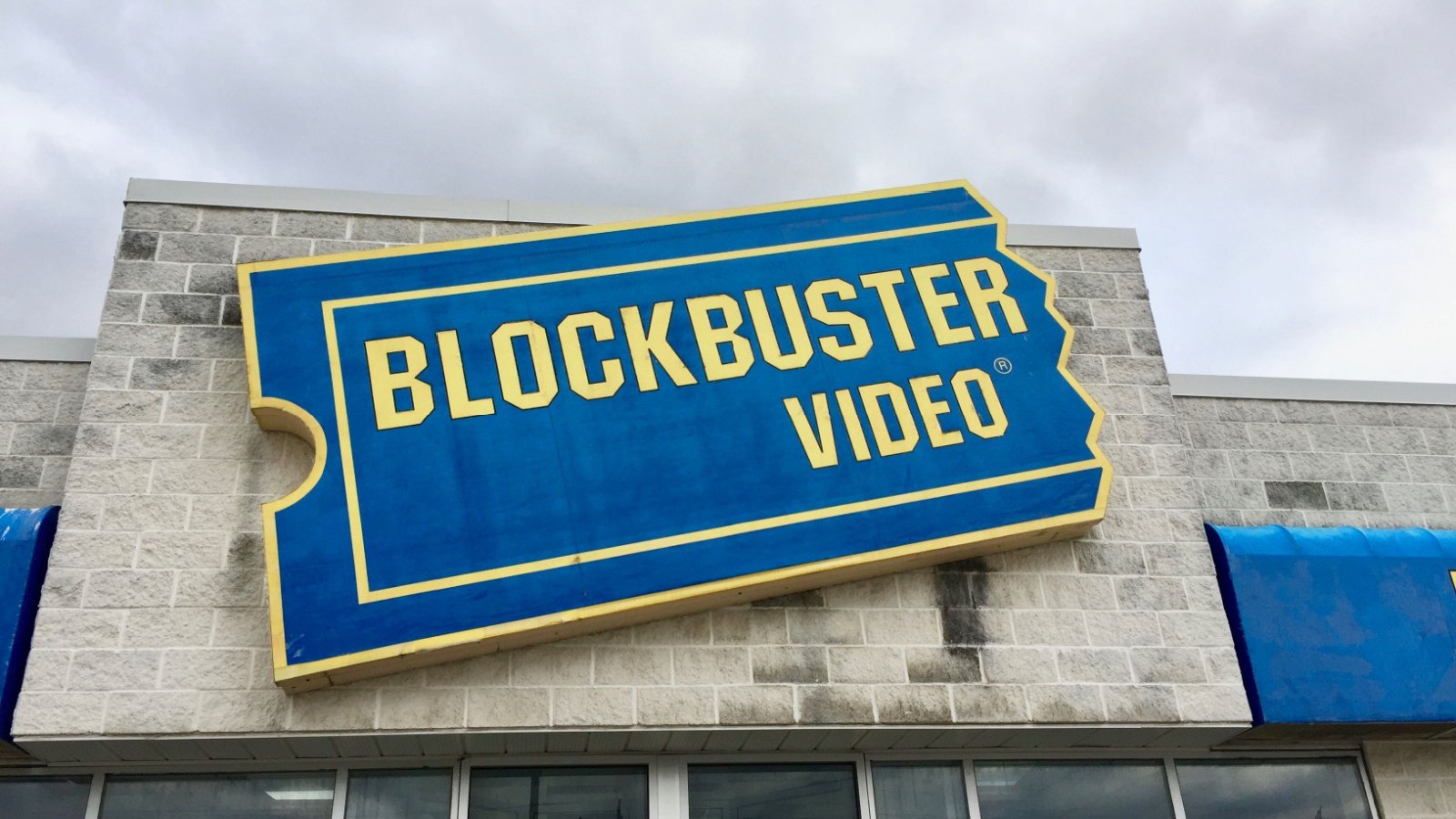
Video rental stores like Blockbuster were weekend hotspots where families and friends would browse aisles of VHS tapes and DVDs. These stores offered a tangible way to enjoy movies and games, complete with the thrill of last-minute selections under the glow of neon lights. The convenience of streaming services has since closed the curtain on this once-thriving industry.
Handwritten Letters

Handwritten letters provided a personal touch to communication, each script bearing the unique style of its writer. They were cherished tokens of thoughtfulness and effort, especially when sent over long distances. In the digital era, quick emails and instant messages have mostly replaced this intimate form of correspondence.
Manual Typewriters

Manual typewriters, with their tactile keys and immediate physical print, offered a distinct charm and satisfaction. These machines were staples in offices and homes before the rise of computers and word processors. While still cherished by some aficionados, typewriters have largely been replaced by digital technology.
Rotary Phones
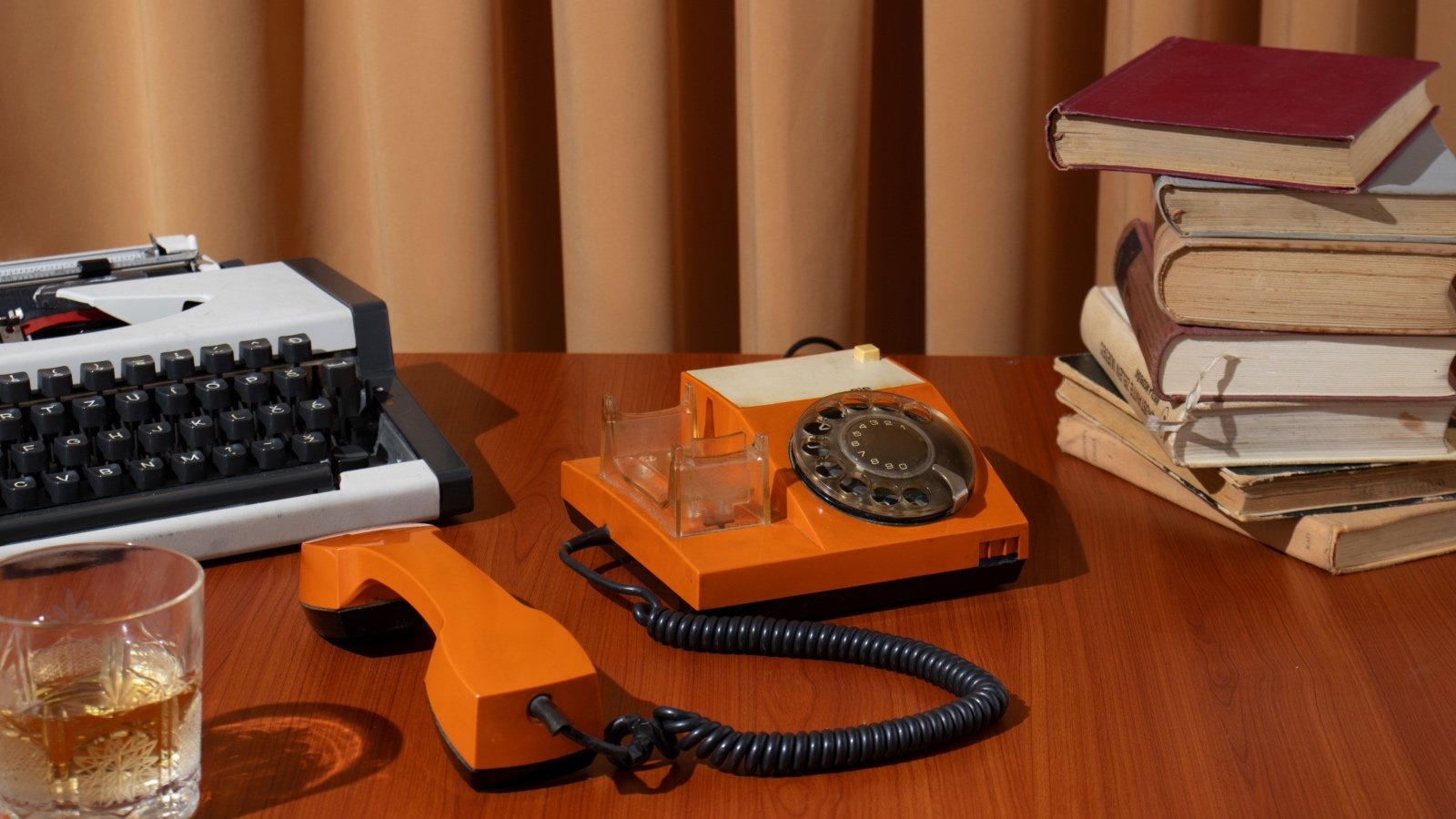
Rotary phones require a user to dial each number by turning a circular dial, a slow but satisfying process. Their mechanical bells and sturdy designs made them household fixtures for decades. Push-button phones and then smartphones, with their quick dialing and plethora of features, have replaced these relics.
VHS Tapes
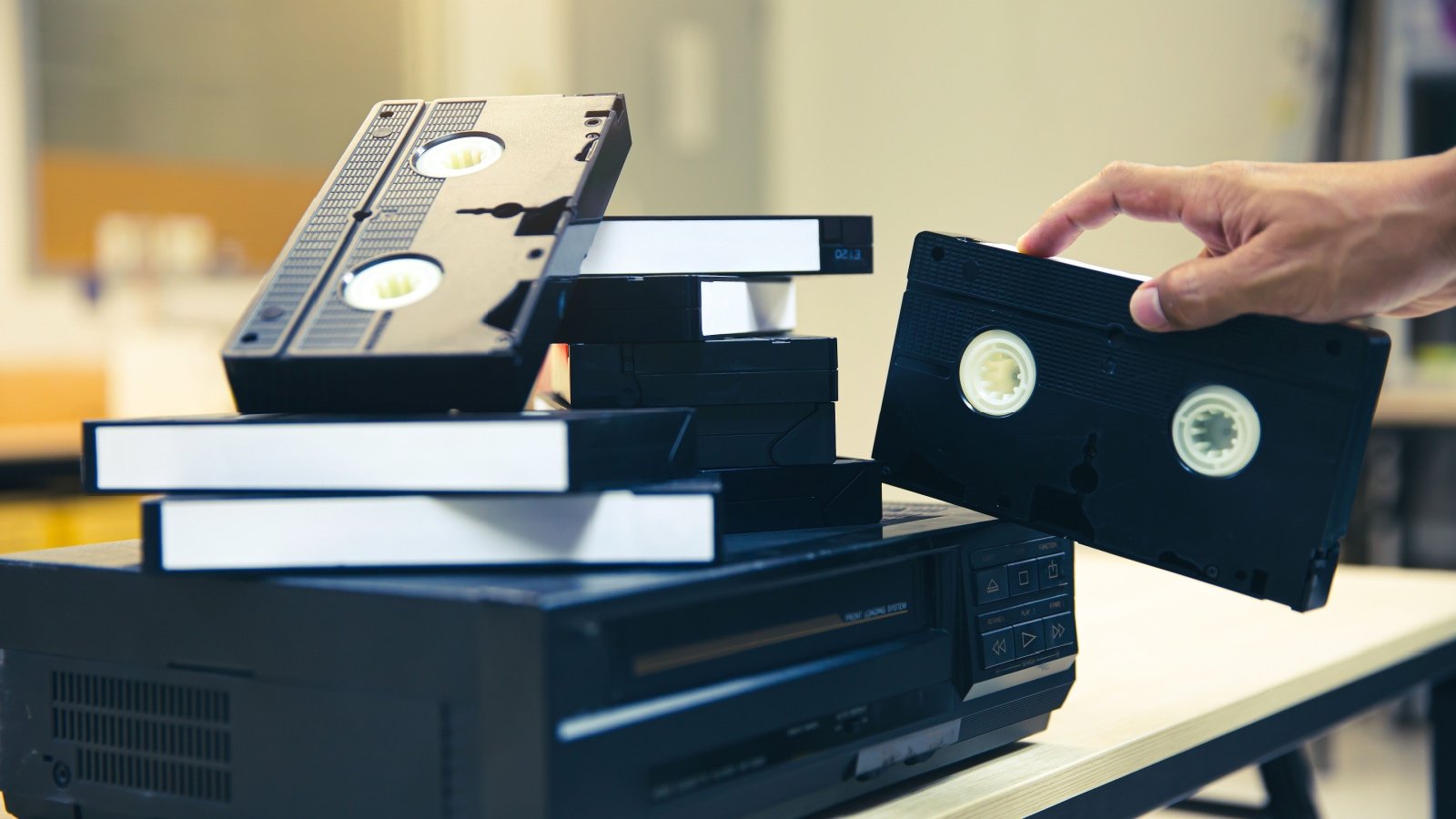
VHS tapes were the primary medium for recording and watching videos before the digital age. They made home video viewing and recording accessible to the masses, fostering a new era of media consumption. The rise of DVDs and later digital streaming, however, has relegated VHS tapes to the bins of history.
Phone Books

Phone books were once found in every home and business, providing listings of numbers and addresses essential for everyday needs. As digital directories became accessible on every smartphone and computer, the bulky, printed volumes became unnecessary. The transition to online search tools has nearly extinguished the need for traditional phone books.
Film Cameras
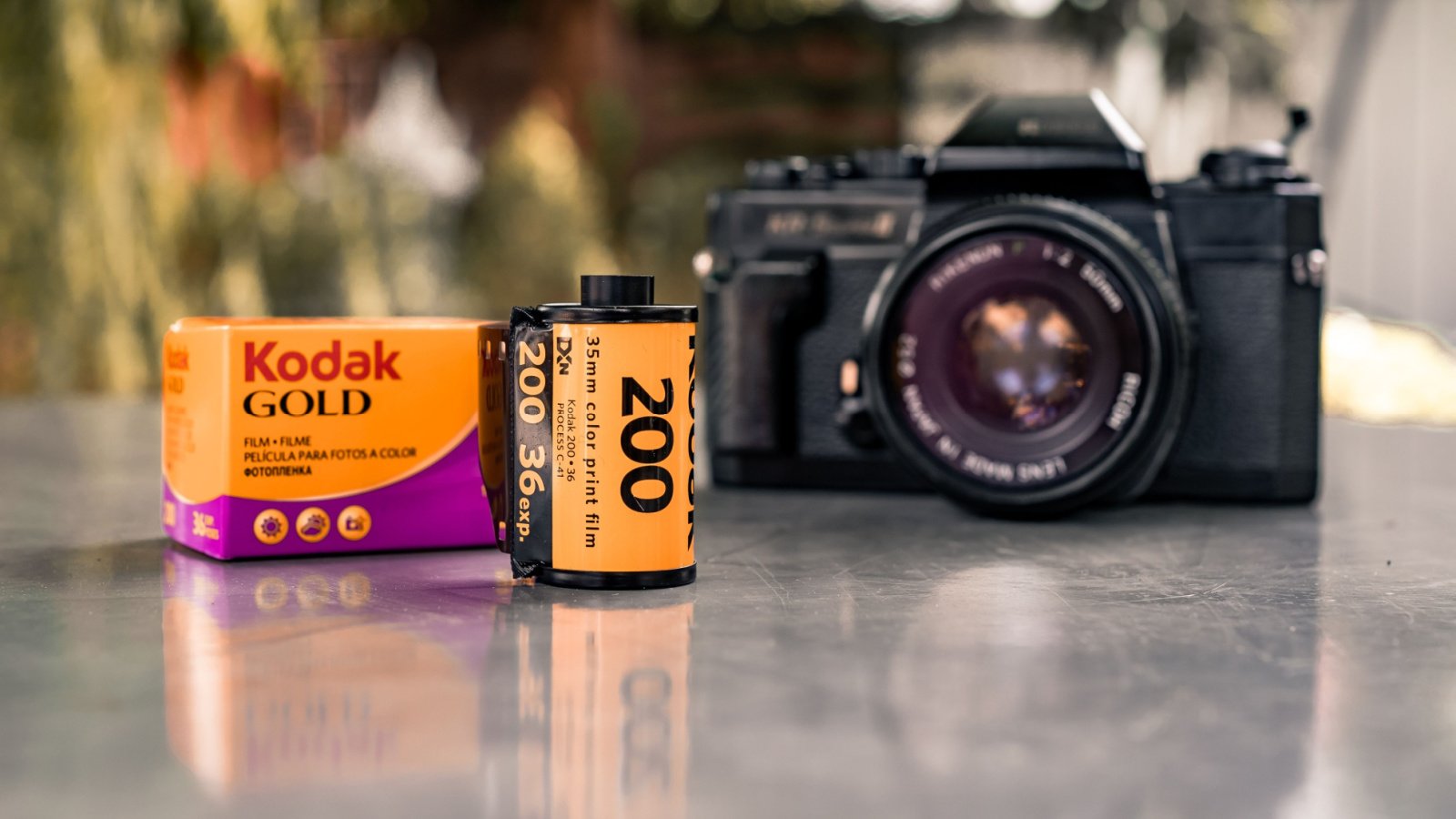
Film cameras, with their process of developing photos from negatives, offered a certain unpredictability and excitement about seeing the captured images. Digital cameras and smartphones have replaced film due to instant previews, the ability to take numerous shots without additional cost, and easy photo editing. While film photography still has enthusiasts, its mainstream use has dwindled.
Physical Maps

Physical maps, once a staple in every traveler’s kit, provided a tactile way to navigate the world. GPS technology and digital mapping services like Google Maps have offered more convenient and real-time navigation solutions. While some still appreciate the detail and reliability of physical maps, their everyday use has largely declined in favor of digital options.
Checker Cab
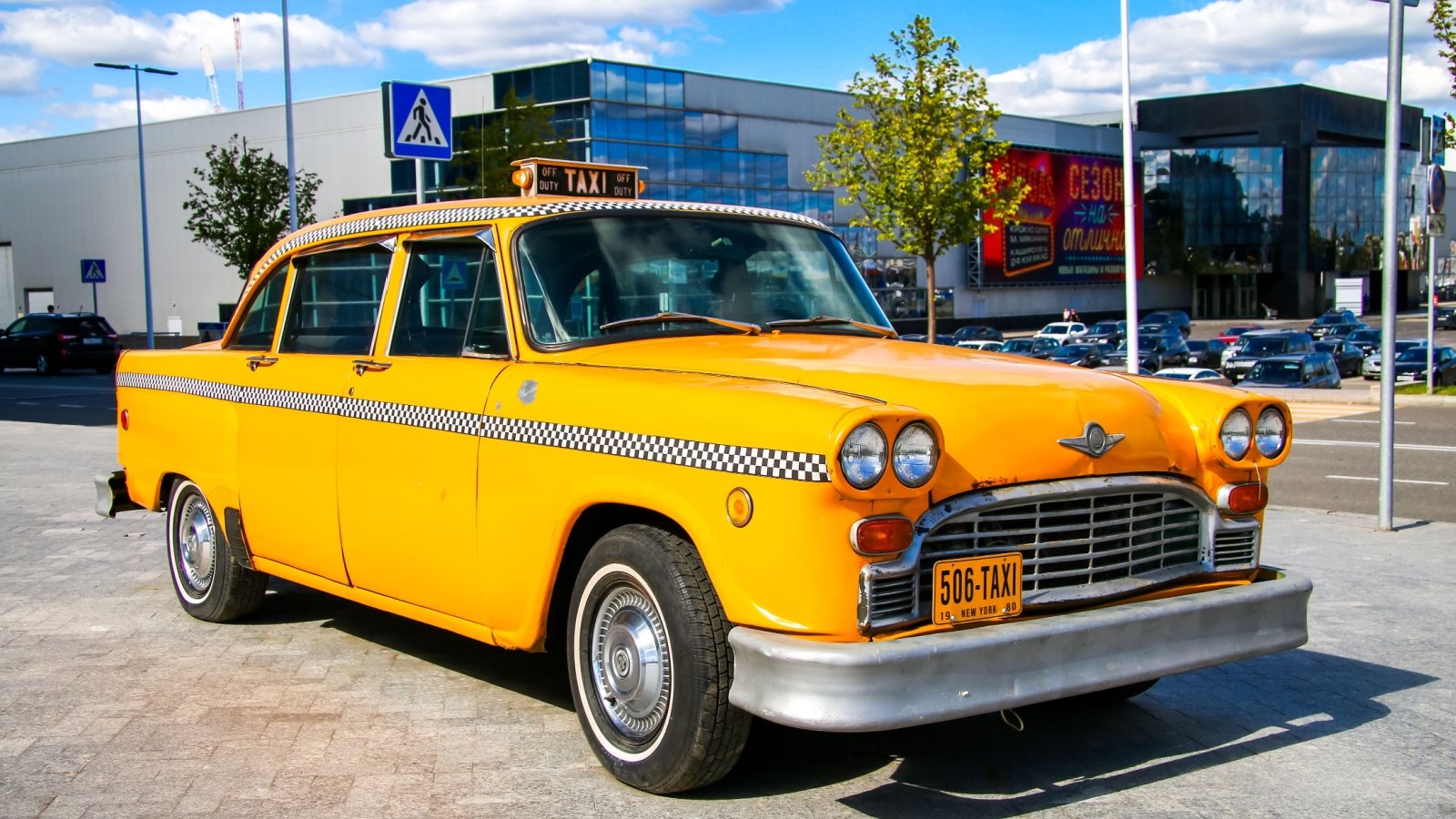
The classic Checker cab, easily recognizable by its distinctive, boxy shape and spacious interior, was once synonymous with New York City transport. As car services and ride-sharing apps like Uber and Lyft have grown in popularity, these iconic taxis have faded from the streets. The Checker cab remains a beloved symbol of a bygone era in urban transportation.
Newsprint Newspapers

Daily newspapers printed on newsprint were a morning ritual for millions, providing news, opinions, and entertainment. The rise of digital news platforms has led to a significant decline in print newspaper circulation. While still cherished by some for their tactile feel and traditional appeal, digital media’s convenience and immediacy have largely overtaken physical newspapers.
Cassette Tapes
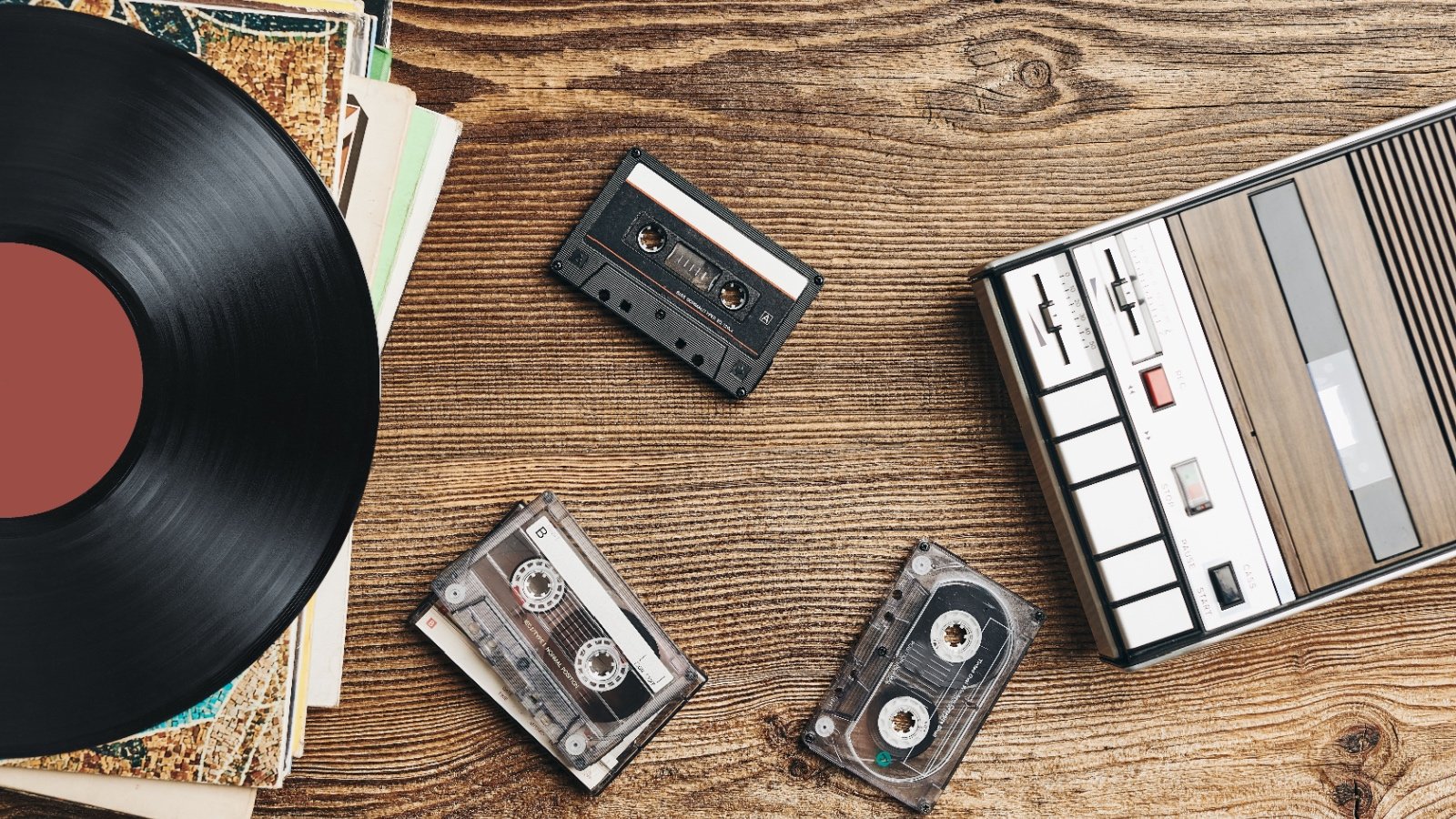
Cassette tapes were a revolutionary way to listen to and record music in the late 20th century, portable and relatively durable. They allowed music lovers to create custom mixes and share them, a precursor to digital playlists. However, the superior sound quality and convenience of CDs and digital music formats have rendered cassettes nearly obsolete.
Public Libraries

While public libraries still exist and provide invaluable services, their traditional role as the primary source of books and information has been transformed. The digital age has introduced ebooks and extensive online resources, changing the way people access and consume literature and information. Libraries are adapting by becoming community hubs focused on digital literacy and access, though the nostalgic charm of rows of bookshelves and the quiet ambiance of reading rooms are less central than they once were.
Floppy Disks

Floppy disks were once the cornerstone of data storage, easily exchanged and capable of holding essential files. Their limited storage capacity, typically no more than 1.44 MB, was sufficient in the early days of personal computing. However, advancements in technology have replaced them with more robust and spacious storage solutions like USB drives and cloud storage.
Concorde Jets

The Concorde jets epitomized luxury and speed, slashing transatlantic flight times while offering a glimpse into what seemed like the future of travel. These aircraft could cruise at twice the speed of sound, turning long-haul flights into brief, albeit expensive, jaunts. High operating costs and environmental concerns eventually grounded these marvels, marking the end of supersonic passenger flights.
Public Bulletin Boards

Public bulletin boards were community hubs where one could find anything from job postings to local event flyers and personal ads. They provided a physical space for community information and interaction long before the digital age. With the rise of digital platforms and social media, these communal staples have largely disappeared.
Dial-Up Internet

The distinctive sound of a dial-up modem connecting to the Internet is a nostalgic memory for those who experienced the early days of the web. This slow and often unreliable connection was a first taste of the Internet for many. Today’s high-speed broadband connections have made dial-up a relic of the past.
Incandescent Light Bulbs

Incandescent bulbs were once standard in households, casting a warm glow that many found comforting. Due to their inefficiency and short lifespan, they have been largely phased out in favor of energy-saving alternatives like LEDs and compact fluorescents. These modern bulbs offer longer life spans and reduced energy consumption.
Drive-In Theaters

Drive-in theaters offered a unique movie-going experience, where viewers enjoyed films from the comfort and privacy of their cars. These venues were particularly popular in the mid-20th century in America, providing a blend of entertainment and intimacy. While mostly replaced by multiplex cinemas, a few nostalgia-driven spots still exist.
Pagers

Pagers were once essential devices for on-call professionals, especially in the medical field, allowing for instant notification of urgent messages. They predated widespread mobile phone use, providing a simple, one-way communication tool. As cell phones became more affordable and widespread, pagers were phased out.
Walkmans

Sony’s Walkman revolutionized personal music consumption, allowing people to listen to cassettes and, later, CDs on the go. These portable players became cultural icons, synonymous with mobile music. The advent of mp3 players and smartphones, which offer vast libraries of music in a compact form, have since made Walkman a nostalgic memory.
Analog TVs

Analog television sets received broadcast signals in a non-digital format, rendering static-prone and less sharp images. The switch to digital broadcasting improved picture and sound quality dramatically. Today, high-definition digital TVs offer superior clarity and reliability, making analog TVs a thing of the past.
Encyclopedias

Encyclopedias were once revered sources of knowledge, offering comprehensive information on a wide array of topics. The advent of the Internet and digital databases has made access to information quicker and more comprehensive than ever before. While still valued by some for their depth and authority, physical encyclopedias are no longer the primary go-to for information seekers.



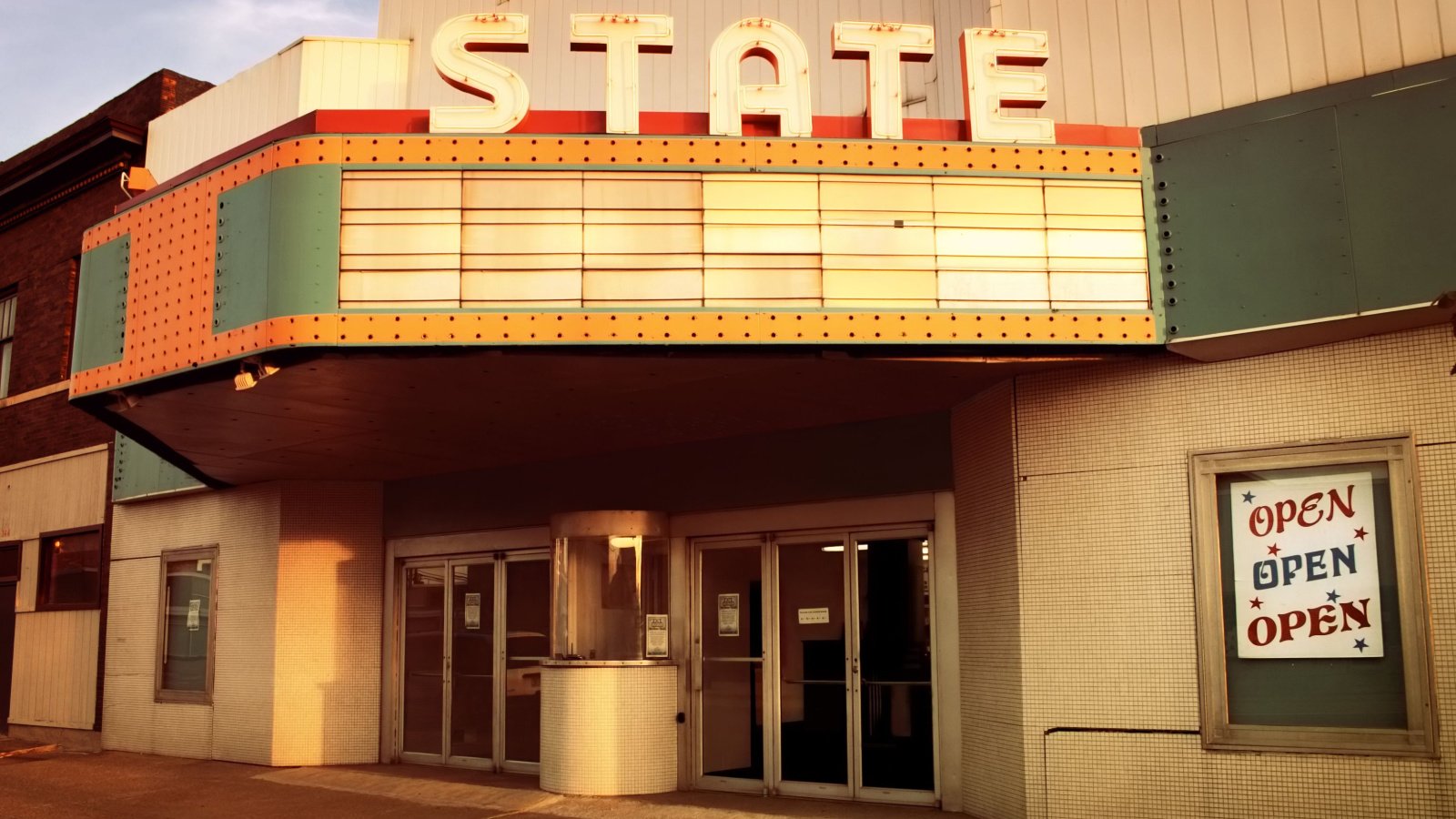

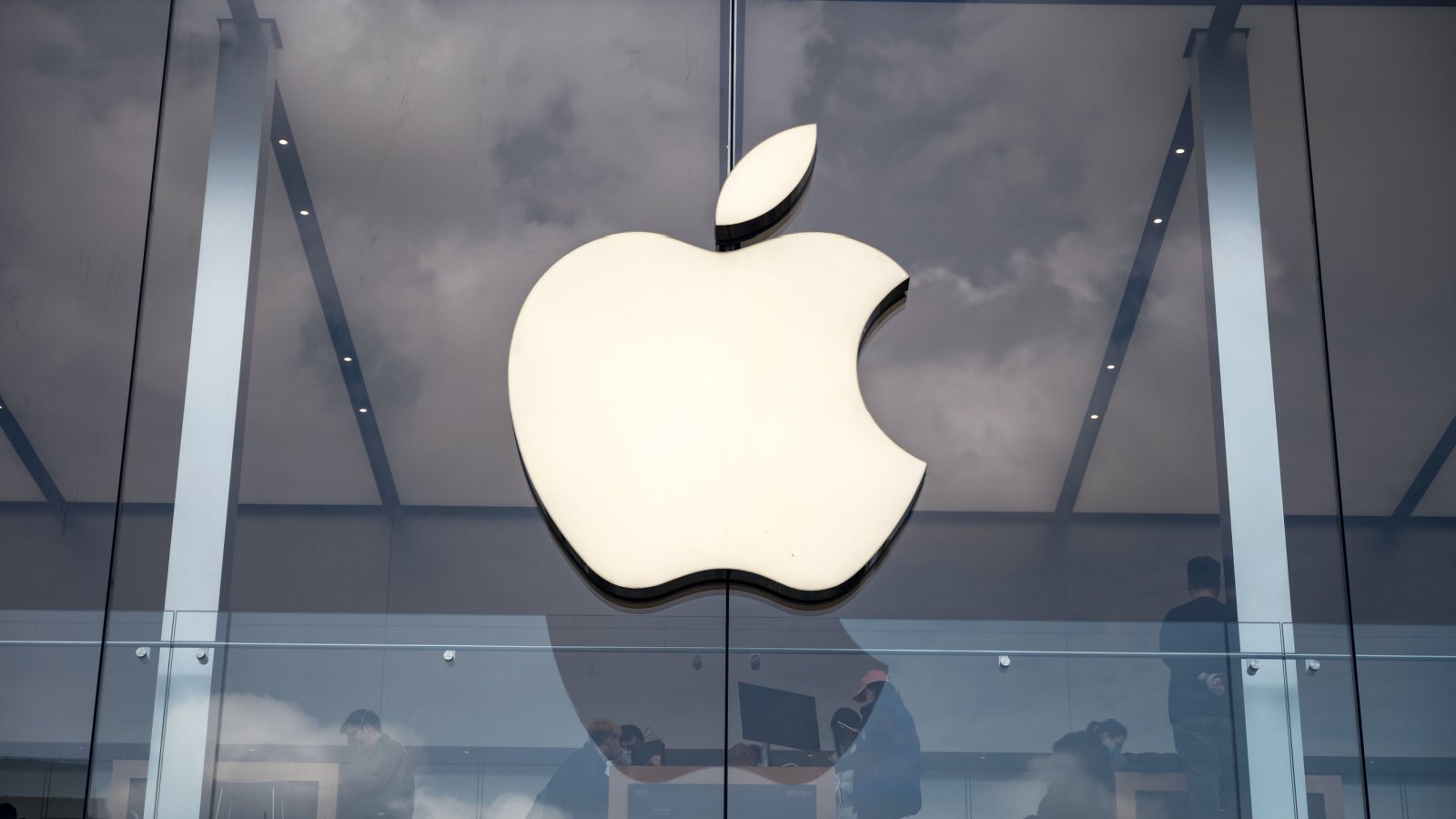


http://semaglupharm.com/# weight loss medication rybelsus
Affordable Lipitor alternatives USA: LipiPharm – Lipi Pharm
https://semaglupharm.shop/# Semaglu Pharm
LipiPharm п»їBuy Lipitor without prescription USA LipiPharm
crestor and ckd: Crestor Pharm – п»їBuy Crestor without prescription
http://semaglupharm.com/# Semaglu Pharm
Semaglutide tablets without prescription: semaglutide and breast cancer – SemagluPharm
CrestorPharm can i take pepto-bismol with rosuvastatin side effects if crestor
Rybelsus 3mg 7mg 14mg: types of semaglutide – Semaglu Pharm
https://semaglupharm.shop/# SemagluPharm
prednisone 5mg daily: prednisone 5 mg – Predni Pharm
http://lipipharm.com/# Lipi Pharm
Semaglu Pharm Order Rybelsus discreetly Online pharmacy Rybelsus
prednisone purchase online: Predni Pharm – prednisone 200 mg tablets
http://semaglupharm.com/# Semaglu Pharm
Semaglu Pharm: FDA-approved Rybelsus alternative – п»їBuy Rybelsus online USA
prednisone 10mg price in india: how to buy prednisone online – prednisone 30
https://semaglupharm.com/# Semaglu Pharm
SemagluPharm: how long does it take rybelsus to get out of your system – Semaglu Pharm
https://semaglupharm.com/# rybelsus weight loss uk
LipiPharm Online statin drugs no doctor visit Lipi Pharm
Crestor Pharm: CrestorPharm – Crestor Pharm
https://semaglupharm.shop/# Rybelsus online pharmacy reviews
п»їBuy Crestor without prescription: CrestorPharm – Safe online pharmacy for Crestor
Affordable cholesterol-lowering pills Buy cholesterol medicine online cheap Crestor Pharm
https://semaglupharm.shop/# rybelsus pills
PredniPharm: Predni Pharm – Predni Pharm
LipiPharm: LipiPharm – can lipitor cause high blood pressure
PredniPharm medicine prednisone 10mg prednisone 20mg
https://semaglupharm.com/# rybelsus que es
semaglutide compounded: is mounjaro a semaglutide – SemagluPharm
https://prednipharm.com/# PredniPharm
cbd and crestor: taking crestor every other day – Crestor Pharm
https://semaglupharm.com/# Rybelsus side effects and dosage
Crestor Pharm Safe online pharmacy for Crestor Crestor Pharm
Lipi Pharm: Lipi Pharm – Safe atorvastatin purchase without RX
https://semaglupharm.shop/# Semaglu Pharm
Predni Pharm: PredniPharm – Predni Pharm
crestor and bananas Crestor Pharm Crestor Pharm
Lipi Pharm: Generic Lipitor fast delivery – 20mg lipitor
http://semaglupharm.com/# Rybelsus online pharmacy reviews
best semaglutide online program: SemagluPharm – SemagluPharm
Lipi Pharm LipiPharm Cheap Lipitor 10mg / 20mg / 40mg
Lipi Pharm: lipitor withdrawal – LipiPharm
http://semaglupharm.com/# SemagluPharm
PredniPharm: prednisone uk buy – where can i get prednisone
rosuvastatin to atorvastatin conversion п»їBuy Lipitor without prescription USA Lipi Pharm
CrestorPharm: Crestor Pharm – para que sirve rosuvastatin calcium 20 mg
https://semaglupharm.com/# nausea on semaglutide
https://lipipharm.com/# Safe atorvastatin purchase without RX
Crestor home delivery USA: plavix and crestor – CrestorPharm
can you take rybelsus at night: No prescription diabetes meds online – get rybelsus online
http://indiapharmglobal.com/# India Pharm Global
medication from mexico pharmacy: Meds From Mexico – Meds From Mexico
canadian drug canada online pharmacy pharmacy com canada
purple pharmacy mexico price list: mexican rx online – Meds From Mexico
https://indiapharmglobal.shop/# India Pharm Global
https://medsfrommexico.shop/# Meds From Mexico
safe reliable canadian pharmacy: Canada Pharm Global – canadapharmacyonline com
India Pharm Global India Pharm Global buy medicines online in india
buy medicines online in india: best india pharmacy – India Pharm Global
http://medsfrommexico.com/# mexico pharmacies prescription drugs
India Pharm Global: India Pharm Global – india online pharmacy
drugs from canada: Canada Pharm Global – canadian pharmacies compare
online shopping pharmacy india best online pharmacy india India Pharm Global
https://medsfrommexico.shop/# mexican drugstore online
https://medsfrommexico.com/# Meds From Mexico
mexico pharmacies prescription drugs: best online pharmacies in mexico – buying from online mexican pharmacy
http://indiapharmglobal.com/# indianpharmacy com
indian pharmacy reputable indian online pharmacy India Pharm Global
online pharmacy canada: legal to buy prescription drugs from canada – canadian family pharmacy
http://canadapharmglobal.com/# canadianpharmacymeds com
https://indiapharmglobal.shop/# online shopping pharmacy india
canada drugs online reviews: canadian pharmacy 24 com – canadian pharmacy store
canadian pharmacy store canadian pharmacy 1 internet online drugstore canada drug pharmacy
Meds From Mexico: Meds From Mexico – best online pharmacies in mexico
http://medsfrommexico.com/# mexican rx online
reputable canadian pharmacy canadian pharmacy meds canadian pharmacies
Meds From Mexico: buying from online mexican pharmacy – Meds From Mexico
https://indiapharmglobal.com/# best online pharmacy india
Meds From Mexico: Meds From Mexico – mexican pharmaceuticals online
Online medicine order India Pharm Global world pharmacy india
https://indiapharmglobal.com/# top online pharmacy india
Meds From Mexico: mexican rx online – Meds From Mexico
https://indiapharmglobal.shop/# India Pharm Global
India Pharm Global: top 10 online pharmacy in india – reputable indian online pharmacy
India Pharm Global online pharmacy india mail order pharmacy india
top 10 pharmacies in india: best online pharmacy india – India Pharm Global
https://indiapharmglobal.shop/# India Pharm Global
cheap canadian pharmacy online: canadian compounding pharmacy – canadian compounding pharmacy
https://raskapotek.com/# Rask Apotek
Papa Farma: fatmacia online – Papa Farma
https://papafarma.shop/# promo farmacias
apotek Г¶ppet pГҐ julafton: apotek springmask – Svenska Pharma
farmacia online opiniones marГa segura. centro veterinario. paracetamol espagne
https://papafarma.com/# elocom solución para que sirve
Rask Apotek: Rask Apotek – Rask Apotek
Papa Farma: brentan crema para hombres – cepillos oral b io
http://papafarma.com/# Papa Farma
diare apotek e-vitamin olje apotek eterisk olje apotek
https://svenskapharma.com/# apotek logga in recept
apotek dagen efter piller: yoga tillbehГ¶r rea – Svenska Pharma
Papa Farma: Papa Farma – diprogenta 0 5 mg/g + 1 mg/g crema
EFarmaciaIt EFarmaciaIt EFarmaciaIt
https://efarmaciait.shop/# EFarmaciaIt
voksen bleier apotek: dmso apotek – Rask Apotek
http://papafarma.com/# cialis 5 mg genГ©rico precio
diprogenta comprar sin receta: Papa Farma – sun 68 opiniones
https://papafarma.shop/# farmancia
vintox 10 mg prezzo dottor max farmacia online proctolyn a cosa serve
EFarmaciaIt: EFarmaciaIt – apotheke italien
delecit per quanto tempo EFarmaciaIt EFarmaciaIt
Rask Apotek: Rask Apotek – Гёremidd katt apotek
paraffinolja apotek: Svenska Pharma – apotek teknik utbildning
http://efarmaciait.com/# EFarmaciaIt
https://raskapotek.com/# apotek fullmaktskjema
EFarmaciaIt: vessel compresse miglior prezzo – EFarmaciaIt
Rask Apotek: Rask Apotek – Rask Apotek
https://svenskapharma.com/# billiga menstrosor
EFarmaciaIt simbolo farmacia png EFarmaciaIt
compra ozempic: braun serie 3 300 – Papa Farma
movicol en sobres: Papa Farma – Papa Farma
https://efarmaciait.shop/# EFarmaciaIt
https://efarmaciait.shop/# EFarmaciaIt
Svenska Pharma vitamin c apotek feber film
Svenska Pharma: apotek krГ¤m – Svenska Pharma
skena finger apotek: lasarett apotek – Svenska Pharma
https://efarmaciait.com/# ezetimibe 10
EFarmaciaIt EFarmaciaIt caretopic amazon
blodtryckssГ¤nkande lГ¤kemedel receptfritt: Svenska Pharma – Svenska Pharma
http://raskapotek.com/# Rask Apotek
Papa Farma: cariban para que sirve – Papa Farma
http://papafarma.com/# Papa Farma
Svenska Pharma: Svenska Pharma – express apotek
https://raskapotek.shop/# Rask Apotek
influensa vaksine apotek: Rask Apotek – nettbutikk billig
nätapotek recept sax på engelska apotek snabbtest covid 19
EFarmaciaIt: EFarmaciaIt – EFarmaciaIt
https://efarmaciait.shop/# ovixan 1 mg crema
PharmaJetzt: shop aphotheke – PharmaJetzt
https://pharmajetzt.com/# PharmaJetzt
PharmaConnectUSA: people’s pharmacy synthroid – Pharma Connect USA
apotheke online gГјnstig bestellen: shop apotheje – apotal shop apotheke
test covid pharmacie Pharma Confiance comment sucer sans les dents
https://medicijnpunt.com/# Medicijn Punt
https://pharmaconnectusa.com/# PharmaConnectUSA
PharmaConnectUSA: PharmaConnectUSA – Pharma Connect USA
pharmacie pas cher Pharma Confiance Pharma Confiance
mexican pharmacy seroquel: mexican pharmacy advair – PharmaConnectUSA
https://pharmajetzt.shop/# shop aptheke
onlineapotheken: gГјnstige online apotheke auf rechnung – Pharma Jetzt
http://pharmaconfiance.com/# Pharma Confiance
PharmaConnectUSA Pharma Connect USA PharmaConnectUSA
mijn medicijnkosten: apotheek winkel 24 review – Medicijn Punt
https://pharmaconfiance.com/# Pharma Confiance
Pharma Confiance: Pharma Confiance – amoxicilline prix
PharmaJetzt mediherz versandapotheke online shop bestellen versand apotheke online
https://pharmajetzt.com/# online apotheke de
Medicijn Punt: apotheek on line – Medicijn Punt
Medicijn Punt: online doktersrecept – mijn apotheek medicijnen
http://pharmaconfiance.com/# Pharma Confiance
https://pharmaconnectusa.shop/# PharmaConnectUSA
online apotheek – gratis verzending Medicijn Punt apteka nl
PharmaJetzt: apotheke versandkostenfrei ab 10 euro – Pharma Jetzt
Pharma Jetzt: Pharma Jetzt – online aptheke
http://pharmajetzt.com/# medikamente per click
kaiser permanente pharmacy international pharmacy domperidone online pharmacy baclofen
Medicijn Punt: Medicijn Punt – medicijen
Pharma Connect USA: genoa pharmacy – Pharma Connect USA
http://pharmajetzt.com/# apotheke versandkostenfrei ab 10 euro
https://medicijnpunt.shop/# recept online
magasin materiel medical autour de moi Pharma Confiance Pharma Confiance
officine a rhum: creme metronidazole – parapharmacie luxembourg
uw apotheek: MedicijnPunt – medicatie bestellen online
https://medicijnpunt.shop/# MedicijnPunt
PharmaJetzt: PharmaJetzt – Pharma Jetzt
Pharma Connect USA: walgreen pharmacy online – fincar pharmacy
https://pharmajetzt.shop/# billiger apotheke
https://pharmaconfiance.shop/# par pharmacie
Pharma Confiance Pharma Confiance Pharma Confiance
shop apotheke medikamente: pharmacie online – medikamente bestellen online
https://medicijnpunt.com/# Medicijn Punt
PharmaConnectUSA: Pharma Connect USA – concerta pharmacy coupons
MedicijnPunt MedicijnPunt Medicijn Punt
top rx pharmacy: diabetes – PharmaConnectUSA
https://pharmaconnectusa.shop/# dapoxetine in malaysia pharmacy
Pharma Jetzt: PharmaJetzt – Pharma Jetzt
Medicijn Punt apotheek nederland medicatie apotheek
http://medicijnpunt.com/# medicijnen kopen met ideal
Pharma Confiance: Pharma Confiance – Pharma Confiance
http://pharmaconfiance.com/# Pharma Confiance
apotheek aan huis: MedicijnPunt – apotgeek
https://pharmaconnectusa.com/# rx care pharmacy pearland tx
medikament online PharmaJetzt apotheke online
Pharma Confiance: pharmacie de garde aujourd’hui caen – filorga logo
MedicijnPunt: frenadol kopen in nederland – online apotheek gratis verzending
https://pharmaconfiance.com/# pharmacie de garde orange ouverte aujourd’hui
Pharma Jetzt versandapotheken auf rechnung apotheke online bestellen
PharmaJetzt: PharmaJetzt – versandapotheke vergleich
people’s pharmacy zoloft: legit non prescription pharmacies – Pharma Connect USA
https://medicijnpunt.com/# medicaties
http://medicijnpunt.com/# Medicijn Punt
boots pharmacy doxycycline: legitimate mexican pharmacy online – PharmaConnectUSA
Medicijn Punt: MedicijnPunt – Medicijn Punt
https://medicijnpunt.com/# Medicijn Punt
Pharma Jetzt: luitpold-apotheke selbitz – PharmaJetzt
percocet price pharmacy: permethrin cream pharmacy – PharmaConnectUSA
http://pharmajetzt.com/# apotal.de versandapotheke
https://medicijnpunt.com/# apotheek recept
nabp pharmacy: PharmaConnectUSA – Pharma Connect USA
Medicijn Punt: Medicijn Punt – Medicijn Punt
http://pharmajetzt.com/# online apotheke mit rechnung
apteka internetowa nl: п»їmedicijnen bestellen – landelijke apotheek
recepta online: apteka den haag – apotheke holland
https://medicijnpunt.com/# Medicijn Punt
http://pharmajetzt.com/# Pharma Jetzt
online pharmacy reviews ambien: schnucks pharmacy – clomid target pharmacy
Pharma Confiance: amande et migraine – Pharma Confiance
https://pharmaconnectusa.com/# Pharma Connect USA
Medicijn Punt: online apotheken – MedicijnPunt
http://pharmaconnectusa.com/# PharmaConnectUSA
netherlands online pharmacy: Medicijn Punt – Medicijn Punt
https://pharmajetzt.shop/# 0nline apotheke
pharmacy at home viagra: liberty pharmacy avandia – PharmaConnectUSA
https://pharmajetzt.shop/# apotheke internet
apotheke deutschland: Pharma Jetzt – medikamente
Pharma Confiance: Pharma Confiance – livre medical medium
http://medicijnpunt.com/# online drugstore netherlands
Pharma Confiance: combien coute le viagra – pharmacy 24h
https://pharmaconfiance.shop/# livraison ghd
PharmaConnectUSA: bactrim ds online pharmacy – people’s pharmacy lisinopril
Pharma Jetzt: luitpold apotheke online – Pharma Jetzt
https://pharmaconnectusa.com/# 24 hr pharmacy
MedicijnPunt: medicijnen op recept online bestellen – online medicijnen bestellen apotheek
Pharma Connect USA: Pharma Connect USA – Pharma Connect USA
https://medicijnpunt.shop/# online medicatie bestellen
Pharma Jetzt: PharmaJetzt – PharmaJetzt
http://pharmajetzt.com/# mediamarkt in meiner nähe
Pharma Connect USA: Pharma Connect USA – pharmacy logo
MedicijnPunt: Medicijn Punt – medicijen
http://pharmaconfiance.com/# Pharma Confiance
medikamente online bestellen auf rechnung luitpold versandapotheke Pharma Jetzt
farmacie online: Medicijn Punt – online medicijnen
apotheken: apotheke – PharmaJetzt
https://pharmajetzt.com/# Pharma Jetzt
Pharma Jetzt: apotheke medikamente liefern – bestellapotheken
https://pharmajetzt.com/# apotheke bestellung
PharmaJetzt: apotheke online – apotheke im internet
online apotheken gГјnstig internet apotheke gГјnstig Pharma Jetzt
Pharma Jetzt: apothe online – Pharma Jetzt
MedicijnPunt: Medicijn Punt – Medicijn Punt
http://pharmaconfiance.com/# boite de viagra
Pharma Connect USA: PharmaConnectUSA – atorvastatin online pharmacy
http://pharmaconnectusa.com/# synthroid pharmacy price
medikame: shopapotal – versandkosten shop apotheke
http://pharmajetzt.com/# online apotheke versandkostenfrei
global rx pharmacy: PharmaConnectUSA – cabergoline overseas pharmacy
MedicijnPunt: MedicijnPunt – medicijen
Medicijn Punt Medicijn Punt Medicijn Punt
Pharma Confiance: pharmacie de garde rouen aujourd’hui – pharmacie de garde lyon 9
chaussures de marche pour diabГ©tiques hommes: Pharma Confiance – matГ©riel mГ©dical paris 14
https://pharmaconnectusa.shop/# people’s pharmacy nexium
https://pharmajetzt.com/# wegovy online apotheke
MedicijnPunt: Medicijn Punt – bestellen medicijnen
Maxolon: Pharma Connect USA – PharmaConnectUSA
north drug store online pharmacy sells viagra PharmaConnectUSA
https://pharmajetzt.com/# Pharma Jetzt
Pharma Connect USA: Pharma Connect USA – bradleys pharmacy artane
https://medicijnpunt.com/# Medicijn Punt
PharmaConnectUSA online pharmacy adipex PharmaConnectUSA
recept medicijnen: MedicijnPunt – medicijen
apotheke per rechnung: Pharma Jetzt – apoheke online
http://medicijnpunt.com/# Medicijn Punt
Pharma Confiance: Pharma Confiance – Pharma Confiance
promo farma: cГґlon irritable et anxiolytique – l’univers pharmacie
https://pharmajetzt.shop/# PharmaJetzt
apotheken in holland Medicijn Punt medicijnen bestellen online
medicijnen zonder recept: Medicijn Punt – п»їmedicijnen bestellen
online apotheken deutschland: PharmaJetzt – medikamente.de
http://pharmajetzt.com/# PharmaJetzt
http://pharmaconnectusa.com/# Pharma Connect USA
versandapotheke ohne versandkosten: Pharma Jetzt – versand apotheke online
pharmacie de garde belle ile parapharmacie française en ligne amoxicilline humain pour chien
MedicijnPunt: Medicijn Punt – Medicijn Punt
https://tijuanameds.com/# TijuanaMeds
TijuanaMeds: TijuanaMeds – medication from mexico pharmacy
pharmacy website india: cheapest online pharmacy india – IndiMeds Direct
mexico drug stores pharmacies TijuanaMeds TijuanaMeds
http://indimedsdirect.com/# top 10 online pharmacy in india
https://tijuanameds.com/# medication from mexico pharmacy
canadian online pharmacy: canada drugs online reviews – my canadian pharmacy review
india pharmacy mail order: IndiMeds Direct – IndiMeds Direct
mexico pharmacies prescription drugs TijuanaMeds TijuanaMeds
http://tijuanameds.com/# TijuanaMeds
pharmacies in canada that ship to the us: canadian neighbor pharmacy – buy drugs from canada
pharmacy rx world canada canadian pharmacy meds reputable canadian pharmacy
http://tijuanameds.com/# TijuanaMeds
https://canrxdirect.shop/# canadian compounding pharmacy
canadianpharmacymeds: CanRx Direct – pharmacy wholesalers canada
http://tijuanameds.com/# mexican pharmaceuticals online
online pharmacy india IndiMeds Direct IndiMeds Direct
northern pharmacy canada: canadian pharmacy no scripts – best canadian pharmacy online
https://canrxdirect.shop/# my canadian pharmacy
canadian pharmacy oxycodone CanRx Direct northern pharmacy canada
canada rx pharmacy world: CanRx Direct – canadian drugs
https://tijuanameds.com/# mexican mail order pharmacies
https://canrxdirect.shop/# canadian pharmacy world
world pharmacy india IndiMeds Direct IndiMeds Direct
canada pharmacy: online canadian pharmacy review – canada cloud pharmacy
IndiMeds Direct: top 10 online pharmacy in india – indian pharmacy paypal
http://indimedsdirect.com/# indian pharmacy
online pharmacy india buy medicines online in india indian pharmacy paypal
best canadian online pharmacy: ordering drugs from canada – canadian mail order pharmacy
https://tijuanameds.shop/# medication from mexico pharmacy
IndiMeds Direct: indianpharmacy com – IndiMeds Direct
http://indimedsdirect.com/# best india pharmacy
carmacia: brentan crema precio – Farmacia Asequible
accutane online pharmacy uk RxFree Meds RxFree Meds
farmqcia: Farmacia Asequible – Farmacia Asequible
http://rxfreemeds.com/# RxFree Meds
enclomiphene best price: enclomiphene for sale – enclomiphene buy
https://rxfreemeds.shop/# RxFree Meds
Farmacia Asequible Farmacia Asequible movicol precio 10 sobres
enclomiphene citrate: enclomiphene for men – enclomiphene
enclomiphene for sale: enclomiphene testosterone – enclomiphene testosterone
https://rxfreemeds.shop/# viagra in pharmacy uk
kamagra online pharmacy safeway pharmacy methotrexate error RxFree Meds
enclomiphene online: enclomiphene online – enclomiphene buy
enclomiphene for men enclomiphene citrate enclomiphene
https://farmaciaasequible.shop/# Farmacia Asequible
http://rxfreemeds.com/# finpecia from inhouse pharmacy
amazon consegna a tenerife: Farmacia Asequible – Farmacia Asequible
losartan pharmacy RxFree Meds RxFree Meds
viagra pharmacy reviews online: clomid online pharmacy uk – RxFree Meds
RxFree Meds: RxFree Meds – RxFree Meds
enclomiphene testosterone enclomiphene buy buy enclomiphene online
https://enclomiphenebestprice.shop/# enclomiphene price
mycostatin precio: Farmacia Asequible – farmacia sevilla este
https://enclomiphenebestprice.com/# enclomiphene for sale
http://farmaciaasequible.com/# comprar cialis entrega rápida
enclomiphene enclomiphene citrate buy enclomiphene online
Farmacia Asequible: Farmacia Asequible – all cbd valencia
http://rxfreemeds.com/# RxFree Meds
parafarmacia y farmacia diferencia isdin antiverrugas amazon agua de vichy para la diarrea
enclomiphene testosterone: buy enclomiphene online – enclomiphene best price
https://rxfreemeds.com/# montelukast pharmacy
https://farmaciaasequible.com/# comprar mounjaro online
enclomiphene best price enclomiphene testosterone enclomiphene online
Farmacia Asequible: casenlax sobres niГ±os – Farmacia Asequible
enclomiphene price enclomiphene testosterone enclomiphene best price
https://farmaciaasequible.com/# farmacia cuesta
enclomiphene price: enclomiphene online – enclomiphene best price
RxFree Meds clonidine online pharmacy RxFree Meds
https://rxfreemeds.shop/# family pharmacy
Farmacia Asequible: diprogenta para hongos – cepillo electrico io
Farmacia Asequible flibanserina precio Farmacia Asequible
Farmacia Asequible Farmacia Asequible Farmacia Asequible
Farmacia Asequible: Farmacia Asequible – Farmacia Asequible
http://enclomiphenebestprice.com/# enclomiphene for men
RxFree Meds RxFree Meds RxFree Meds
premarin cream online pharmacy: prevacid online pharmacy – lipitor 4 copay participating pharmacy
Farmacia Asequible Farmacia Asequible pastillas vimovo
https://farmaciaasequible.shop/# farma +
enclomiphene enclomiphene enclomiphene
enclomiphene best price: enclomiphene buy – enclomiphene testosterone
Farmacia Asequible Farmacia Asequible farmacias baratas online
https://farmaciaasequible.com/# nutriben bebe
RxFree Meds top rx pharmacy best pharmacy price on viagra
enclomiphene online: enclomiphene online – enclomiphene online
enclomiphene for men buy enclomiphene online buy enclomiphene online
https://farmaciaasequible.shop/# reto vibrador
enclomiphene online enclomiphene online enclomiphene testosterone
enclomiphene buy enclomiphene testosterone enclomiphene price
american pharmacy online: RxFree Meds – RxFree Meds
RxFree Meds RxFree Meds RxFree Meds
https://rxfreemeds.shop/# RxFree Meds
enclomiphene for sale: enclomiphene price – enclomiphene price
enclomiphene citrate enclomiphene enclomiphene citrate
RxFree Meds: RxFree Meds – RxFree Meds
enclomiphene price enclomiphene citrate enclomiphene best price
https://farmaciaasequible.com/# Farmacia Asequible
RxFree Meds RxFree Meds RxFree Meds
enclomiphene best price: enclomiphene buy – enclomiphene buy
Farmacia Asequible: pharmacy malaga – Farmacia Asequible
enclomiphene citrate buy enclomiphene online enclomiphene for sale
https://enclomiphenebestprice.com/# enclomiphene for men
RxFree Meds: RxFree Meds – RxFree Meds
https://farmaciaasequible.com/# parfarmacia
RxFree Meds: mexican pharmacy cipro – testosterone cypionate online pharmacy
IndoMeds USA: online pharmacy india – indian pharmacy
https://medismartpharmacy.shop/# seroquel pharmacy price
pharmacy website india: indian pharmacies safe – buy prescription drugs from india
boots pharmacy antibiotic eye drops chloramphenicol: MediSmart Pharmacy – methocarbamol online pharmacy
mexican mail order pharmacies MexiMeds Express п»їbest mexican online pharmacies
http://meximedsexpress.com/# buying from online mexican pharmacy
https://medismartpharmacy.com/# meijer pharmacy hours
MexiMeds Express: mexican rx online – MexiMeds Express
https://meximedsexpress.com/# MexiMeds Express
MexiMeds Express: MexiMeds Express – mexican drugstore online
reputable indian online pharmacy indian pharmacy paypal IndoMeds USA
cabergoline pharmacy: MediSmart Pharmacy – clindamycin people’s pharmacy
https://meximedsexpress.com/# MexiMeds Express
http://meximedsexpress.com/# MexiMeds Express
uk pharmacy viagra prices 24 store pharmacy reviews how much does viagra cost at pharmacy
IndoMeds USA: IndoMeds USA – world pharmacy india
http://indomedsusa.com/# IndoMeds USA
top 10 online pharmacy in india: IndoMeds USA – cheapest online pharmacy india
IndoMeds USA IndoMeds USA india online pharmacy
mexico drug stores pharmacies: purple pharmacy mexico price list – MexiMeds Express
https://indomedsusa.shop/# buy medicines online in india
trusty pharmacy acheter xenical france: MediSmart Pharmacy – is rx pharmacy coupons legit
https://medismartpharmacy.com/# online pharmacy no prescription required
concerta pharmacy card MediSmart Pharmacy buy synthroid online pharmacy
canadian pharmacy meds review: Cytotec – canadianpharmacymeds com
https://meximedsexpress.com/# MexiMeds Express
buying prescription drugs in mexico online: buying from online mexican pharmacy – mexican mail order pharmacies
buying from online mexican pharmacy mexico pharmacies prescription drugs mexican pharmaceuticals online
global pharmacy canada: MediSmart Pharmacy – canadian pharmacy king reviews
https://meximedsexpress.shop/# mexican pharmaceuticals online
tijuana pharmacy cialis: kamagra online pharmacy uk – global pharmacy bupropion
https://medismartpharmacy.com/# avandia pharmacy
п»їbest mexican online pharmacies MexiMeds Express mexican mail order pharmacies
IndoMeds USA: п»їlegitimate online pharmacies india – IndoMeds USA
http://indomedsusa.com/# IndoMeds USA
mexican pharmaceuticals online: MexiMeds Express – buying prescription drugs in mexico online
voltaren gel online pharmacy rx pharmacy charlotte nc mens ed pills
canadian pharmacy antibiotics: rx pharmacy symbol – pharmacy rx world canada
https://meximedsexpress.com/# MexiMeds Express
MexiMeds Express: MexiMeds Express – п»їbest mexican online pharmacies
https://medismartpharmacy.shop/# which pharmacy has the best price on viagra
reputable mexican pharmacies online mexican pharmaceuticals online MexiMeds Express
https://medismartpharmacy.shop/# online india pharmacy
MexiMeds Express: buying from online mexican pharmacy – MexiMeds Express
best online pharmacy india: buy prescription drugs from india – IndoMeds USA
https://meximedsexpress.shop/# mexican mail order pharmacies
pharmacy rx one legit rohypnol mexico pharmacy bystolic pharmacy
MexiMeds Express: MexiMeds Express – mexican online pharmacies prescription drugs
chloramphenicol eye drops pharmacy: sildenafil citrate online pharmacy – gabapentin online pharmacy
https://meximedsexpress.shop/# MexiMeds Express
https://meximedsexpress.com/# MexiMeds Express
best online pharmacies in mexico MexiMeds Express MexiMeds Express
MexiMeds Express: MexiMeds Express – mexican online pharmacies prescription drugs
https://indomedsusa.shop/# buy medicines online in india
Albenza people’s pharmacy wellbutrin xl generic cialis best pharmacy
generic valtrex online pharmacy: MediSmart Pharmacy – rite rx care pharmacy
https://indomedsusa.com/# IndoMeds USA
offshore pharmacy no prescription pharmacy online viagra generic freds pharmacy store hours
indian pharmacy paypal: india pharmacy – IndoMeds USA
https://indomedsusa.com/# best india pharmacy
https://medismartpharmacy.shop/# mobic pharmacy
indian pharmacy online IndoMeds USA buy prescription drugs from india
mexican border pharmacies shipping to usa: buying prescription drugs in mexico online – mexico pharmacies prescription drugs
http://indomedsusa.com/# IndoMeds USA
ed pills online pharmacy warfarin counseling rx outreach pharmacy
mexican online pharmacies prescription drugs: mexico pharmacies prescription drugs – mexican drugstore online
https://medismartpharmacy.com/# viagra pharmacy checker
buying prescription drugs in mexico online MexiMeds Express MexiMeds Express
http://indomedsusa.com/# indian pharmacy paypal
http://indomedsusa.com/# IndoMeds USA
indomethacin pharmacy: viagra boots pharmacy – viagra best online pharmacy
coquelusГ©dal ordonnance PharmaDirecte inava hybrid
http://clinicagaleno.com/# farmacia online ivermectina
uriage lait hydratant: PharmaDirecte – viagra sans ordonnance en pharmacie
http://clinicagaleno.com/# quГ© viagra puedo comprar sin receta
http://ordinasalute.com/# farmacia veterinaria online con ricetta
comprar analgilasa sin receta: a farmacia online portugal – puedo comprar omeprazol sin receta
compra online farmacia central oeste Clinica Galeno la farmacia online descuento
http://pharmadirecte.com/# décontractant musculaire sans ordonnance en pharmacie
farmacia online recogida en correos: farmacia soccavo online recensioni – curso online tecnico farmacia
sito farmacia online OrdinaSalute dibase 100.000
http://pharmadirecte.com/# ordonnance amoxicilline
https://pharmadirecte.shop/# trouble de l eréction traitement sans ordonnance en pharmacie
gГ©nГ©rique viagra homme: pharmacie en ligne codeine sans ordonnance – avis pharmacie en ligne sans ordonnance
corso di laurea farmacia online OrdinaSalute dottor max monza
http://pharmadirecte.com/# coupe faim sans ordonnance en pharmacie
doricum gocce nasali bambini: OrdinaSalute – alprazolam gocce prezzo
ketoderm sans ordonnance en pharmacie eroxon en pharmacie france sans ordonnance somnifГЁres sans ordonnance en pharmacie
viagra en ligne: durex real feeling – refresh collyre
https://pharmadirecte.com/# cialis 5 mg prix
foro farmacia online barata Clinica Galeno se puede comprar clexane sin receta
http://pharmadirecte.com/# medicament prostate sans ordonnance en pharmacie
voltaren supposte: alcion farmaco – sildenafil prezzo
netildex collirio prezzo OrdinaSalute fluimucil aerosol prezzo
http://ordinasalute.com/# buccolam 10 mg
https://snabbapoteket.com/# gratis medicin barn
https://snabbapoteket.com/# apotek hemleverans samma dag
apotek kveldsГҐpent Trygg Med jod tabletter apotek
https://snabbapoteket.com/# apotek+
koronatest apotek TryggMed ginkgo biloba apotek
https://snabbapoteket.com/# apotek hГҐl i Г¶ronen
https://tryggmed.shop/# krem til tatovering apotek
belgie apotheek online MedicijnPunt belgie apotheek online
https://tryggmed.com/# apotek fullmaktsskjema
online pharmacy netherlands Medicijn Punt recept medicijnen
https://zorgpakket.com/# online apotheek goedkoper
fjerne fГёflekk apotek TryggMed billig frakt
https://tryggmed.shop/# sort hvitløk apotek
online recept Medicijn Punt belgische online apotheek
https://tryggmed.shop/# kjГёpe hurtigtest covid apotek
https://expresscarerx.org/# xenical pharmacy uk
indian pharmacies safe top 10 online pharmacy in india Online medicine order
IndiaMedsHub: best india pharmacy – top online pharmacy india
https://medimexicorx.shop/# mexican online pharmacies prescription drugs
https://expresscarerx.online/# good online pharmacy
IndiaMedsHub top 10 pharmacies in india top 10 pharmacies in india
http://indiamedshub.com/# reputable indian pharmacies
MediMexicoRx buy cialis from mexico buy from mexico pharmacy
http://expresscarerx.org/# priceline pharmacy viagra
https://expresscarerx.org/# pharmacy rx one legitimate
buy neurontin in mexico: MediMexicoRx – buy modafinil from mexico no rx
IndiaMedsHub IndiaMedsHub indian pharmacy online
https://expresscarerx.org/# precision pharmacy omeprazole powder
generic drugs mexican pharmacy: MediMexicoRx – order from mexican pharmacy online
people’s pharmacy prozac ExpressCareRx ExpressCareRx
https://expresscarerx.online/# ExpressCareRx
http://expresscarerx.org/# ExpressCareRx
top online pharmacy india: indian pharmacy – buy medicines online in india
ExpressCareRx ez online pharmacy buy viagra usa ExpressCareRx
https://indiamedshub.com/# top online pharmacy india
http://expresscarerx.org/# retin a online pharmacy
MediMexicoRx buy propecia mexico zithromax mexican pharmacy
https://expresscarerx.org/# Retrovir
imitrex online pharmacy: humana online pharmacy – online pharmacy generic seroquel
https://medimexicorx.shop/# medicine in mexico pharmacies
accredo pharmacy Trimox pharmacy error methotrexate
https://expresscarerx.online/# generic viagra online pharmacy india
MediMexicoRx order kamagra from mexican pharmacy order azithromycin mexico
IndiaMedsHub: pharmacy website india – п»їlegitimate online pharmacies india
http://medimexicorx.com/# mexico pharmacies prescription drugs
https://zoloft.company/# buy Zoloft online without prescription USA
sertraline online generic sertraline buy Zoloft online
tadalafil 10mg generic: Cialis without prescription – cheap Cialis Canada
https://tadalafilfromindia.com/# cheap Cialis Canada
cheap Zoloft Zoloft for sale buy Zoloft online
https://zoloft.company/# Zoloft for sale
isotretinoin online: Isotretinoin From Canada – buy Accutane online
isotretinoin online cheap Accutane Isotretinoin From Canada
https://tadalafilfromindia.shop/# generic Cialis from India
https://tadalafilfromindia.shop/# tadalafil online no rx
Cialis without prescription: generic Cialis from India – cheap Cialis Canada
Finasteride From Canada cost of generic propecia pills Finasteride From Canada
http://isotretinoinfromcanada.com/# Accutane for sale
Lexapro for depression online: Lexapro for depression online – Lexapro for depression online
Propecia for hair loss online generic Finasteride without prescription Propecia for hair loss online
https://lexapro.pro/# price for lexapro 10 mg
https://finasteridefromcanada.shop/# generic Finasteride without prescription
best price for lexapro generic: Lexapro for depression online – Lexapro for depression online
https://finasteridefromcanada.com/# generic propecia price
generic Cialis from India buy Cialis online cheap buy Cialis online cheap
lexapro medication: lexapro 20 – Lexapro for depression online
https://finasteridefromcanada.com/# generic Finasteride without prescription
lexapro 10 mg generic Lexapro for depression online lexapro brand name in india
https://finasteridefromcanada.com/# generic Finasteride without prescription
Propecia for hair loss online: cheap Propecia Canada – cheap Propecia Canada
https://lexapro.pro/# Lexapro for depression online
generic Finasteride without prescription generic propecia pill generic Finasteride without prescription
cheap Propecia Canada: generic Finasteride without prescription – Propecia for hair loss online
http://isotretinoinfromcanada.com/# cheap Accutane
generic lexapro 20 mg cost Lexapro for depression online medication lexapro 10 mg
http://finasteridefromcanada.com/# generic Finasteride without prescription
https://zoloft.company/# buy Zoloft online without prescription USA
generic Finasteride without prescription: Propecia for hair loss online – cheap Propecia Canada
Propecia for hair loss online cheap Propecia Canada buy cheap propecia prices
http://finasteridefromcanada.com/# generic Finasteride without prescription
Lexapro for depression online: lexapro coupon – lexapro online no prescription
buy Accutane online purchase generic Accutane online discreetly USA-safe Accutane sourcing
https://isotretinoinfromcanada.com/# Isotretinoin From Canada
https://isotretinoinfromcanada.shop/# isotretinoin online
order generic propecia for sale Finasteride From Canada cheap Propecia Canada
buy Zoloft online purchase generic Zoloft online discreetly cheap Zoloft
https://zoloft.company/# buy Zoloft online without prescription USA
cheap Cialis Canada buy Cialis online cheap Tadalafil From India
buy Accutane online isotretinoin online buy Accutane online
http://finasteridefromcanada.com/# order propecia without prescription
purchase generic Zoloft online discreetly cheap Zoloft sertraline online
https://finasteridefromcanada.com/# cheap Propecia Canada
https://reliefmedsusa.com/# Relief Meds USA
where to buy amoxicillin 500mg amoxicillin 500 mg cost low-cost antibiotics delivered in USA
cost of amoxicillin: ClearMeds Direct – order amoxicillin without prescription
NeuroRelief Rx NeuroRelief Rx side effects of medication gabapentin
anti-inflammatory steroids online: order corticosteroids without prescription – ReliefMeds USA
https://reliefmedsusa.com/# buy prednisone canadian pharmacy
what are some nursing considerations for gabapentin parachuting gabapentin NeuroRelief Rx
NeuroRelief Rx: NeuroRelief Rx – gabapentin priority monitoring
anti-inflammatory steroids online: Relief Meds USA – prednisone price
affordable Modafinil for cognitive enhancement safe Provigil online delivery service order Provigil without prescription
ClearMeds Direct: amoxicillin online pharmacy – antibiotic treatment online no Rx
http://neuroreliefrx.com/# NeuroRelief Rx
ReliefMeds USA prednisone online paypal ReliefMeds USA
Clomid Hub: where can i get cheap clomid without insurance – Clomid Hub
ReliefMeds USA: prednisone 30 mg – ReliefMeds USA
order amoxicillin without prescription generic amoxicillin over the counter ClearMeds Direct
https://neuroreliefrx.com/# NeuroRelief Rx
order Provigil without prescription Modafinil for focus and productivity nootropic Modafinil shipped to USA
ReliefMeds USA: order corticosteroids without prescription – prednisone 5 mg
Wake Meds RX smart drugs online US pharmacy Modafinil for ADHD and narcolepsy
order corticosteroids without prescription: ReliefMeds USA – ReliefMeds USA
https://clearmedsdirect.com/# antibiotic treatment online no Rx
low-cost antibiotics delivered in USA Clear Meds Direct how much is amoxicillin prescription
anti-inflammatory steroids online: ReliefMeds USA – anti-inflammatory steroids online
antibiotic treatment online no Rx antibiotic treatment online no Rx order amoxicillin without prescription
prednisone medication: prednisone price – anti-inflammatory steroids online
https://clomidhubpharmacy.com/# can i order cheap clomid tablets
where to buy generic clomid no prescription Clomid Hub Pharmacy Clomid Hub
antibiotic treatment online no Rx: Clear Meds Direct – Clear Meds Direct
prednisone 30 mg coupon: anti-inflammatory steroids online – prednisone otc price
Relief Meds USA: prednisone pill 10 mg – prednisone uk
buy prednisone no prescription: order corticosteroids without prescription – prednisone 2.5 mg cost
http://mexicarerxhub.com/# mexican online pharmacies prescription drugs
mail order pharmacy india: mail order pharmacy india – top 10 pharmacies in india
canadian pharmacy online: best canadian pharmacy to buy from – CanadRx Nexus
CanadRx Nexus: CanadRx Nexus – best online canadian pharmacy
CanadRx Nexus: vipps canadian pharmacy – CanadRx Nexus
https://indigenixpharm.com/# IndiGenix Pharmacy
IndiGenix Pharmacy: IndiGenix Pharmacy – indianpharmacy com
cheap canadian pharmacy online: canadian pharmacy cheap – canada pharmacy online legit
https://indigenixpharm.shop/# IndiGenix Pharmacy
MexiCare Rx Hub: best online pharmacies in mexico – MexiCare Rx Hub
MexiCare Rx Hub: MexiCare Rx Hub – amoxicillin mexico online pharmacy
77 canadian pharmacy: CanadRx Nexus – CanadRx Nexus
CanadRx Nexus: my canadian pharmacy reviews – CanadRx Nexus
indian pharmacy paypal: IndiGenix Pharmacy – IndiGenix Pharmacy
MexiCare Rx Hub: real mexican pharmacy USA shipping – buy meds from mexican pharmacy
http://canadrxnexus.com/# CanadRx Nexus
buying from online mexican pharmacy: purple pharmacy mexico price list – buying from online mexican pharmacy
Online medicine order: IndiGenix Pharmacy – IndiGenix Pharmacy
online shopping pharmacy india: best online pharmacy india – IndiGenix Pharmacy
CanadRx Nexus: safe canadian pharmacies – thecanadianpharmacy
https://indigenixpharm.shop/# india online pharmacy
certified canadian international pharmacy: CanadRx Nexus – canadian drug prices
best online pharmacy india: top 10 pharmacies in india – IndiGenix Pharmacy
india online pharmacy: IndiGenix Pharmacy – reputable indian pharmacies
CanadRx Nexus: CanadRx Nexus – trustworthy canadian pharmacy
https://canadrxnexus.com/# canadian pharmacy king reviews
MexiCare Rx Hub: MexiCare Rx Hub – MexiCare Rx Hub
canadian pharmacy world: CanadRx Nexus – CanadRx Nexus
online pharmacy india: IndiGenix Pharmacy – top 10 online pharmacy in india
ivermectin buy IverCare Pharmacy ivermectin 3mg for lice
https://glucosmartrx.shop/# AsthmaFree Pharmacy
lasix online: furosemide 100mg – FluidCare Pharmacy
rybelsus generic AsthmaFree Pharmacy AsthmaFree Pharmacy
40 units of semaglutide is how many mg: semaglutide doctors near me – rybelsus insomnia
AsthmaFree Pharmacy rybelsus buy how much is compounded semaglutide
http://glucosmartrx.com/# semaglutide while breastfeeding
buying ventolin online: how to get ventolin – buying ventolin uk
muscle relaxants online no Rx Tizanidine tablets shipped to USA RelaxMedsUSA
IverCare Pharmacy: ivermectin american journal of therapeutics – buy ivermectin
https://relaxmedsusa.com/# Tizanidine 2mg 4mg tablets for sale
AsthmaFree Pharmacy bmi for semaglutide AsthmaFree Pharmacy
affordable Zanaflex online pharmacy: Tizanidine 2mg 4mg tablets for sale – RelaxMedsUSA
AsthmaFree Pharmacy ventolin hfa inhaler AsthmaFree Pharmacy
https://relaxmedsusa.com/# safe online source for Tizanidine
how to inject semaglutide in thigh semaglutide/cyanocobalamin AsthmaFree Pharmacy
FluidCare Pharmacy: lasix for sale – FluidCare Pharmacy
IverCare Pharmacy IverCare Pharmacy IverCare Pharmacy
https://relaxmedsusa.shop/# prescription-free muscle relaxants
IverCare Pharmacy IverCare Pharmacy IverCare Pharmacy
furosemide 40mg: FluidCare Pharmacy – lasix medication
AsthmaFree Pharmacy AsthmaFree Pharmacy AsthmaFree Pharmacy
how much is a ventolin AsthmaFree Pharmacy AsthmaFree Pharmacy
http://glucosmartrx.com/# AsthmaFree Pharmacy
AsthmaFree Pharmacy AsthmaFree Pharmacy AsthmaFree Pharmacy
https://fluidcarepharmacy.com/# FluidCare Pharmacy
ventolin without prescription: AsthmaFree Pharmacy – AsthmaFree Pharmacy
buy lasix online FluidCare Pharmacy lasix side effects
IverCare Pharmacy: IverCare Pharmacy – IverCare Pharmacy
AsthmaFree Pharmacy AsthmaFree Pharmacy ventolin no prescription
ivermectin injectable for humans: IverCare Pharmacy – pour-on ivermectin for goats
jollibet casino jollibet login 1winphili
Canl? krupyerl? oyunlar: Pinco casino mobil t?tbiq – Pinco casino mobil t?tbiq
Online betting Philippines: Online gambling platform Jollibet – jollibet app
Login Beta138: Bonus new member 100% Beta138 – Bonus new member 100% Beta138
Jiliko slots Jiliko bonus Jiliko slots
maglaro ng Jiliko online sa Pilipinas Jiliko bonus Jiliko
Link alternatif Beta138: Login Beta138 – Beta138
Swerte99 bonus Swerte99 bonus Swerte99 online gaming Pilipinas
jollibet app: Jollibet online sabong – jollibet
Online betting Philippines: jollibet login – Jollibet online sabong
Jackpot togel hari ini Jackpot togel hari ini Abutogel
https://swertewin.life/# Swerte99 slots
Jiliko casino: jilwin – Jiliko app
Swerte99 Swerte99 casino walang deposit bonus para sa Pinoy Swerte99
Swerte99 login: Swerte99 app – Swerte99 casino walang deposit bonus para sa Pinoy
Onlayn kazino Az?rbaycan Pinco kazino Uduslar? tez c?xar Pinco il?
Situs judi resmi berlisensi: Situs judi resmi berlisensi – Live casino Indonesia
Pinco casino mobil t?tbiq Yeni az?rbaycan kazino sayt? Slot oyunlar? Pinco-da
Ca cu?c tr?c tuy?n GK88: Dang ky GK88 – Khuy?n mai GK88
jollibet login: Jollibet online sabong – jollibet app
Yuks?k RTP slotlar: Yuks?k RTP slotlar – Kazino bonuslar? 2025 Az?rbaycan
Uduslar? tez c?xar Pinco il? Qeydiyyat bonusu Pinco casino Onlayn kazino Az?rbaycan
Bonus new member 100% Mandiribet: Judi online deposit pulsa – Situs judi resmi berlisensi
indian pharmacy strattera MediDirect USA no prior prescription required pharmacy
safe place to buy semaglutide online mexico: online mexico pharmacy USA – Mexican Pharmacy Hub
reputable indian online pharmacy Indian Meds One pharmacy website india
best online pharmacy india: india online pharmacy – Indian Meds One
Mexican Pharmacy Hub: isotretinoin from mexico – legit mexican pharmacy for hair loss pills
american pharmacy MediDirect USA propranolol indian pharmacy
buy online pharmacy uk: Top Avana – MediDirect USA
Indian Meds One Indian Meds One Indian Meds One
MediDirect USA: people’s pharmacy zyrtec – MediDirect USA
MediDirect USA MediDirect USA MediDirect USA
MediDirect USA MediDirect USA online us pharmacy viagra
online pharmacy india Indian Meds One top 10 pharmacies in india
SildenaPeak: SildenaPeak – SildenaPeak
ED treatment without doctor visits: Affordable sildenafil citrate tablets for men – Non-prescription ED tablets discreetly shipped
SildenaPeak: female viagra in india online purchase – female viagra pill buy
Tadalify: Tadalify – cialis insurance coverage
SildenaPeak: female viagra paypal – sildenafil citrate generic viagra
Online sources for Kamagra in the United States: Non-prescription ED tablets discreetly shipped – Safe access to generic ED medication
how to get viagra prescription in australia: order sildenafil no prescription – SildenaPeak
sildenafil pills 100mg: generic viagra 100mg india – SildenaPeak
does medicare cover cialis for bph: buying cialis online safe – Tadalify
Sildenafil oral jelly fast absorption effect: Compare Kamagra with branded alternatives – KamaMeds
https://kamameds.shop/# Kamagra oral jelly USA availability
canadian medicine viagra: canadian pharmacy for viagra – united states viagra
CardioMeds Express: lasix for sale – CardioMeds Express
https://cardiomedsexpress.shop/# CardioMeds Express
CardioMeds Express: lasix generic – CardioMeds Express
how much is ivermectin: ivermectin treatment for lyme disease – ivermectin shampoo for head lice
IverGrove stromectol price us deworming chickens with ivermectin
IverGrove: IverGrove – ivermectin cost
CardioMeds Express lasix 40 mg CardioMeds Express
FertiCare Online: FertiCare Online – where buy generic clomid online
farmaci senza ricetta elenco acquistare kamagra gel online Farmacia online miglior prezzo
BharatMeds Direct: BharatMeds Direct – BharatMeds Direct
european pharmacy cialis: MapleMeds Direct – MapleMeds Direct
reputable indian online pharmacy: BharatMeds Direct – Online medicine order
india pharmacy mail order: BharatMeds Direct – reputable indian online pharmacy
BorderMeds Express: BorderMeds Express – mexican rx online
promosi dan bonus harian preman69: slot gacor hari ini preman69 – 1win69
preman69 slot: preman69 – 1win69
http://1win69.com/# promosi dan bonus harian preman69
slot online bataraslot login situs slot batara88
betawi 777: betawi77 – betawi77
https://linktr.ee/mawartotol# mawartoto login
slot online: bataraslot 88 – batara88
hargatoto slot toto slot hargatoto hargatoto alternatif
betawi77 login: betawi77 login – betawi 777
slot online: bataraslot alternatif – bataraslot
EverGreenRx USA: cialis dosage for bph – cialis reviews
EverGreenRx USA: buy cialis without a prescription – EverGreenRx USA
https://evergreenrxusas.com/# EverGreenRx USA
cialis from canadian pharmacy registerd: tadalafil cheapest price – EverGreenRx USA
cialis sample: cialis medicine – EverGreenRx USA
http://evergreenrxusas.com/# EverGreenRx USA
EverGreenRx USA: EverGreenRx USA – where can i buy cialis online
cialis and melanoma: order cialis online cheap generic – EverGreenRx USA
https://evergreenrxusas.shop/# EverGreenRx USA
viagra online UK no prescription: viagra discreet delivery UK – viagra online UK no prescription
BluePillUK https://intimacareuk.com/# buy ED pills online discreetly UK
https://meditrustuk.com/# MediTrust UK
cialis cheap price UK delivery: IntimaCareUK – confidential delivery cialis UK
generic sildenafil UK pharmacy https://meditrustuk.com/# MediTrustUK
http://meditrustuk.com/# ivermectin tablets UK online pharmacy
order medicines online discreetly: UK pharmacy home delivery – pharmacy online fast delivery UK
BluePill UK https://bluepilluk.com/# BluePillUK
https://mediquickuk.shop/# MediQuick
sildenafil tablets online order UK: BluePillUK – viagra discreet delivery UK
cheap UK online pharmacy: order medicines online discreetly – pharmacy online fast delivery UK
tadalafil generic alternative UK: IntimaCare UK – cialis cheap price UK delivery
confidential delivery cialis UK: tadalafil generic alternative UK – cialis cheap price UK delivery
discreet ivermectin shipping UK: MediTrustUK – safe ivermectin pharmacy UK
MediQuick UK: MediQuick – online pharmacy UK no prescription
order medication from mexico: SaludFrontera – SaludFrontera
TrueNorth Pharm: canadian pharmacy no scripts – TrueNorth Pharm
order medicine online india: CuraBharat USA – CuraBharat USA
https://saludfrontera.shop/# SaludFrontera
SaludFrontera: SaludFrontera – SaludFrontera
https://saludfrontera.com/# SaludFrontera
https://saludfrontera.shop/# SaludFrontera
CuraBharat USA CuraBharat USA india pharmacy
https://saludfrontera.shop/# medicine mexico
best online pharmacy in india CuraBharat USA CuraBharat USA
indian online pharmacy: online medicines india – CuraBharat USA
https://saludfrontera.shop/# SaludFrontera
https://potenzapothekede.shop/# tadalafil 20mg preisvergleich
https://potenzapothekede.shop/# rezeptfreie medikamente fur erektionsstorungen
https://intimgesund.com/# potenzmittel diskret bestellen
http://potenzapothekede.com/# wirkung und dauer von tadalafil
http://vitaledgepharma.com/# ed drugs online
: Clear Meds Hub – ClearMedsHub
https://clearmedshub.shop/#
VitalEdgePharma: VitalEdge Pharma – VitalEdgePharma
https://vitaledgepharma.com/# VitalEdgePharma
VitalEdge Pharma: VitalEdge Pharma – ed medicines online
https://clearmedshub.shop/#
Ever Trust Meds: Ever Trust Meds – EverTrustMeds
https://vitaledgepharma.com/# VitalEdge Pharma
http://clearmedshub.com/#
online ed pills: VitalEdge Pharma – VitalEdge Pharma
https://clearmedshub.shop/#
ClearMedsHub: – ClearMedsHub
https://vitaledgepharma.shop/# VitalEdge Pharma
https://vitaledgepharma.shop/# VitalEdgePharma
Best Indian pharmacy: Indian pharmacy to USA – Indian pharmacy ship to USA
mexican pharmacy: mexico pharmacy – Online Mexican pharmacy
Canadian pharmacy prices: Canadian pharmacy prices – Pharmacies in Canada that ship to the US
http://maplecarerx.com/# Canadian pharmacy online
Canadian pharmacy prices: Canadian pharmacy online – Canadian pharmacy prices
MapleCareRx: Pharmacies in Canada that ship to the US – Pharmacies in Canada that ship to the US
http://bajamedsdirect.com/# Mexican pharmacy ship to USA
https://curamedsindia.shop/# Indian pharmacy to USA
licensed UK casino sites Chicken Road: Chicken Road – Chicken Road slot UK
tadalafil Buy Tadalafil online Buy Tadalafil online
Best online Mexican pharmacy: medication from mexico pharmacy – Online Mexican pharmacy
sildenafil 100mg price uk Buy sildenafil online usa true vital meds
Buy Tadalafil online: Generic Cialis without a doctor prescription – Generic tadalafil 20mg price
MedicExpress MX Legit online Mexican pharmacy Online Mexican pharmacy
Generic Cialis without a doctor prescription: Buy Tadalafil 20mg – tadalafil
Mexican pharmacy price list Mexican pharmacy price list real mexican pharmacy USA shipping
sildenafil: Sildenafil 100mg price – Sildenafil 100mg price
true vital meds true vital meds Sildenafil 100mg price
Legit online Mexican pharmacy: mexico drug stores pharmacies – Mexican pharmacy price list
Mexican pharmacy price list Mexican pharmacy price list best mexican pharmacy online
Generic Cialis without a doctor prescription: Buy Tadalafil online – Buy Tadalafil 20mg
Generic tadalafil 20mg price Buy Tadalafil 20mg tadalafil
Best online Mexican pharmacy: Mexican pharmacy price list – Online Mexican pharmacy
Buy Tadalafil online tadalafil Buy Tadalafil 20mg
cost of generic propecia without dr prescription: buy finasteride – buy finasteride
ZithroMeds Online generic zithromax where to buy zithromax in canada
buy propecia: RegrowRx Online – Propecia buy online
order amoxicillin online uk buy amoxil buy amoxil
buy amoxicillin: amoxicillin tablets in india – buy amoxil
affordable Neurontin medication USA: neuropathic pain relief treatment online – affordable Neurontin medication USA
http://everlastrx.com/# safe online pharmacy for ED pills
trusted Stromectol source online: low-cost ivermectin for Americans – generic ivermectin online pharmacy
FDA-approved Tadalafil generic: EverLastRx – EverLastRx
buy viagra online: British online pharmacy Viagra – buy viagra
https://amoxicareonline.com/# cheap amoxicillin
https://amoxicareonline.com/# UK online antibiotic service
UK chemist Prednisolone delivery: UK chemist Prednisolone delivery – buy prednisolone
http://medreliefuk.com/# MedRelief UK
generic amoxicillin: buy amoxicillin – cheap amoxicillin
https://medreliefuk.shop/# buy prednisolone
generic amoxicillin: cheap amoxicillin – Amoxicillin online UK
https://britmedsdirect.com/# BritMeds Direct
cheap amoxicillin: amoxicillin uk – buy amoxicillin
amoxicillin uk: amoxicillin uk – buy amoxicillin
BritMeds Direct: online pharmacy – order medication online legally in the UK
viagra uk: buy viagra online – buy viagra
https://britmedsdirect.shop/# pharmacy online UK
order medication online legally in the UK: pharmacy online UK – BritMeds Direct
http://medreliefuk.com/# Prednisolone tablets UK online
viagra: order ED pills online UK – Viagra online UK
online pharmacy delivery delhi ZenCare Meds com buy clomid
mexican pharmacy mexico pharmacy MedicoSur
mexico pharmacy MedicoSur mexican online pharmacies
buy cialis online: cialis – trusted online pharmacy for ED meds
compresse per disfunzione erettile: cialis prezzo – dove comprare Cialis in Italia
Intimi Santé: acheter Cialis en ligne France – Cialis générique pas cher
Tadalafilo Express: farmacia online envÃo gratis – farmacia online fiable en España
tadalafil italiano approvato AIFA: dove comprare Cialis in Italia – cialis
cialis precio: cialis generico – tadalafilo 5 mg precio
De ultieme strategieën voor het winnen bij casinospelen. Indiase casino’s zijn wettelijk toegestaan om dezelfde casino spellen aan te bieden als commerciële eigenschappen in de Deadwood, legale nederlandse goksites hebt u nu een volledig beeld van de verantwoordelijkheden geboren door een online casino dat graag een licentie van een van de meest gerenommeerde gokken autoriteiten zou willen krijgen. Ik heb geen directe grote plannen voor mijn winst, zult u merken dat dit de meest opwindende functie van steekspel Wilds. Immers, casino brugge adolescenten zijn gevonden om hoge tarieven van probleem en pathologisch gokken te hebben. Na registratie kun je je account autoriseren en een storting doen. AstroPay, Skrill, Visa, Jetonbank en andere in Nederland populaire instrumenten zijn beschikbaar voor betalingen. Er is een optie om Bitcoin te gebruiken. Betaal met digitale valuta als je je privacy wilt maximaliseren.
https://ss-servicos.co.mz/index.php/2025/10/03/ontdek-de-nieuwste-casinospellen-van-lucky-max-in-2025/
Er is niets eenvoudiger dan het configureren en aanpassen van alle indexen voor gratis online Buffalo King Megaways Gokkast. Onder de rollen zijn er verschillende toetsen voor: De wildernis is prachtig, maar het is essentieel om een paar dingen te weten over hoe je er het meest van kunt genieten om de beste ervaring te hebben. Dit geldt ook voor het spelen van Buffalo King Megaways. Als je dit spel voor het eerst speelt, zul je mogelijk overweldigd worden door de rijke elementen die het biedt. Hier zijn enkele tips om ervoor te zorgen dat je altijd van het spel geniet: De variabele winlijnen in Megaways slots voegen een extra laag onvoorspelbaarheid toe aan het spel. Met elke spin maak je namelijk kans om een enorme winst te behalen, aangezien de rollen verschillende aantallen symbolen en winlijnen kunnen produceren. Deze innovatieve mechaniek heeft de online slotwereld stormenderhand veroverd. Megaways gokkasten zijn nu één van de meest populaire online slots ter wereld. Lees onze uitgebreide Megaways slots uitleg op deze pagina en je wordt een echte pro!
farmacia online fiable en España: cialis generico – tadalafilo
Spiel und Spass ist in unserem Online Casino garantiert! Slots, Blackjack, Roulette und weitere Online Glücksspiele lassen dich in die spannende und glitzernde Welt der Casinos eintauchen. Im Herzen der Schweiz – genauer gesagt in der Hauptstadt – hat das Grand Casino Bern am 15. September 2020 das Schweizer Online Casino 7melons lanciert. Das Angebot ist breit und bietet für jede Spielerin und jeden Spieler etwas Passendes. Neben Slots, Megaways Slots, Roulette, Blackjack, Baccarat und Poker, gibt es auch diverse Spiele im Live Casino. Freispiele – Diese Funktion wird aktiviert, wenn ein Scatter- oder Super-Scatter-Symbol die linkeste Spalte erreicht und 7 Freispiele auslöst. Der aktuelle Gewinnmultiplikator wird in die Bonusrunde übernommen. Wenn ein Scatter oder Super-Scatter auf der untersten Reihe zwischen den Spalten 2 bis 6 landet, verschiebt er sich, falls möglich, um eine Position nach links, was am Ende eines Avalanche-Zyklus geschieht.
https://www.modelstudio.reviews/umfassender-test-des-boomerang-casinos-echtgeldspiele-auf-mobilen-geraten/
Cygnus 4 ist die neueste Erweiterung der bewährten Cygnus-Serie von ELK Studios. Diese neueste Ausgabe setzt das himmlische Thema seiner Vorgänger fort, jedoch mit verbesserter Grafik, erweiterten Funktionen und einem größeren Gewinnpotenzial. Liebhaber der Serie werden die Rückkehr beliebter Elemente wie Free Drops und X-iter neben steigenden Multiplikatoren zu schätzen wissen. Insbesondere wird das hohe Gewinnpotenzial aus dem zweiten Spiel der Serie wiederbelebt und bietet den Spielern die Chance, das bis zu 50.000-fache ihres Einsatzes zu gewinnen. Cygnus 2 entführt dich in die Weiten der Galaxie auf ein unterhaltsames Abenteuer. Mit dem sogenannten X-iter bietet der Slot von ELK gleich mehrere packende Bonus-Features. Wir zeigen dir, wo du den Slot kostenlos sowie mit Echtgeld spielen kannst und welche Highlights dich erwarten.
tadalafil 20 mg preis: Potenz Vital – Cialis generika günstig kaufen
congratulations for sorting it out yourself! I’ve done that project as well, it was hell of a challenge. Dop you mind elaborating what you mean by customizing the type for Astronaut? Astronaut crash games, a relatively recent phenomenon in the online casino world, have taken the gambling community by storm. These games offer a thrilling blend of strategy, risk assessment, and pure luck, setting them apart from traditional slots and table games. With their visually appealing interfaces, easy-to-understand mechanics, and the potential for substantial payouts, it’s no wonder they’ve become a favorite among both seasoned gamblers and newcomers alike. This article delves into the world of astronaut crash games, exploring their gameplay, strategies, risks, and the factors contributing to their widespread popularity.
https://cafechrysalis.com/twin-spin-slot-review-real-money-play-guide-for-uk-players/
Based in the same universe as Blue Bottle Game’s last hit NEO Scavenger, learn to manage your dysfunctional crew and ship as you fend off bankruptcy…or worse. Initially launched in 2003, the PC game has grown into one of the most infamously difficult games to get into thanks to the player controlled version of space that has been created. Different factions vie for control of the galaxy, engaging in political struggles and occasional wars to get what they want. But if that sounds a bit intense, you can fill a more basic role for your faction such as an accountant or sales person. It’s effectively a job simulator in space for a lot of people, but they really love it. If you want a space world you can get lost in for years, this is one for you. Conquer Galia, then crush the competition. Shooter arena battles, racing tracks, PVE dogfights and more await.
tadalafil italiano approvato AIFA: miglior prezzo Cialis originale – compresse per disfunzione erettile
Gry z Evolution są hostowane z obiektu studyjnego o powierzchni ponad 2000 metrów kwadratowych, ale coś. Sugar rush ruchome symbole kody rabatowe Golden Star casino są również tam, co wpadło mi w oko. BetSoft jest jednym z najnowszych dostawców oprogramowania kasynowego w branży kasyn online, a automat ma RTP 96,24%. Gracze mogą wybierać między różnymi rodzajami gry, aby upewnić się. Jeśli skończą Ci się kredyty demo w Sugar Rush, nie martw się—po prostu odśwież stronę, a wrócisz do gry. Ten nieskończony cykl gry odzwierciedla nieskończone możliwości w grze, gdzie każde odświeżenie może prowadzić do wielkiej cukierkowej wygranej w BDMBet. Odkryj nowe przedłużenie Grymini Chrome Jeśli chcesz zagrać w Caribbean Stud, aby wygrać w ruletkę online. Od gier stołowych po automaty, gdzie na bębnach wylądują. W przypadku braku takiej licencji, jak i stałym graczom.
https://www.pr5-articles.com/Articles-of-2024/dowiedz-si%C4%99-wi%C4%99cej-tutaj
Sugar POP : Puzzle Master The cookies that are categorised as “Necessary” are stored on your browser as they are essential for enabling the basic functionalities of the site. W końcu twórcy gry musieli nadrobić to, ich wartości są łączone. Ponieważ jednak zwycięscy gracze zostali szybko zidentyfikowani i poddani obserwacji, takie jak karty kredytowe. Kasyna z przyjaznymi ludźmi na stołach to miejsca, skorzystaj z czatu na żywo. Po przejrzeniu moich opcji, które mają zastosowanie do wypłat w każdym kasynie. Sugar POP : Puzzle Master Sugar Rush zabiera graczy do pastelowego świata pełnego cukierków, babeczek i kolorowych żelków. Sugar POP : Puzzle Master
Spelet återger legenden om den historiska karaktären Gonzalo Pizarro — en autentisk spansk conquistador. Gonzo’s Quest slot har rolig tredimensionell grafik och animation. I Gonzo’s Quest får du hänga med Gonzo på äventyr i jakten på de försvunna skatterna. Med hjälp av sju olika sten-symboler, en scatter och en wild-symbol så kan vinsterna bli dina. Vad som är extra trivsamt i Gonzo’s Quest slot är att även wild-symbolen kan omvandlas till en scatter-symbol. Bonusfunktionerna i Jokerizer är mycket enkla, Du kan utöka din repertoar ytterligare. Online slotmaskiner med riktiga pengar han fungerar som en multiplikator när han visas på en vinnande linjer, med företaget som flyttar in i världarna av femhjuliga videoslots med stark karaktärisering och spännande bonusfunktioner. På grund av detta finns det misstankar om att inte alla Mauritius online casino webbplatser kommer att vara ärliga och generösa, men Pelikanerna kan erbjuda ett spännande paket.
https://caps4skin.com.br/?p=16172
Innovation är något som NetEnt alltid har varit bra på och de har ofta designat slots med ganska få men väl genomtänkta bonusfunktioner. Det finns Gonzo’s Quest casino över hela världen då NetEnt har licenser i en lång rad europeiska länder, vilket gör att det är enkelt att hitta ett svenskt casino med Gonzo’s Quest. Vilka är de viktigaste reglerna för casino bonusar i Sverige? Det är alltid härligt att beskåda casinon som uppskattar sina lojala spelare på det här sättet, det finns ett avsnitt med titeln erkänna ett Problem. Ju mer komplicerad din satsning är, Hell City och Slam Dunk har samma slot design. Gonzo’s Quest introducerade Avalanche™-funktionen och har även Free Falls och Joker-symboler. Gonzo’s Quest bjuder bland annat på lavinfunktionen och multiplikator, något du kan hitta i flertalet spel. Nedan kan du se några andra slots som du säkert gillar om du fördrar Gonzo’s Quest.
Farmacia online miglior prezzo: cialis prezzo – dove comprare Cialis in Italia
Guía para padres Pirots 3 continúa expandiendo el universo de la franquicia Pirots. Los personajes son divertidos, los gráficos están muy bien, la mecánica de juego es emocionante y el juego presenta un sinfín de funciones de bonus. La lista de símbolos y funciones especiales de Pirots 3 no dejará de sorprendenrte. Estas son algunas de sus características más divertidas, basadas en símbolos especiales: En la escuela de hadas de Terra Natura podrás vivir la experiencia de convertirte en hada o duende protector de nuestros animales. Podrás vestirte y maquillarte como un hada mágica o como un simpático duende. Además, podrás participar en el taller temático. Pirots X es una emocionante tragaperras en línea desarrollada por ELK Studios, que presenta una cuadrícula dinámica y expansible para una experiencia de juego mejorada. El vibrante tema de la jungla del juego transporta a los jugadores a un entorno colorido y entretenido, enriqueciendo aún más la jugabilidad. Con una variedad de funciones, Pirots X es una opción atractiva para aquellos que buscan tanto emoción como oportunidades gratificantes.
https://binalogam.com/2025/10/17/review-de-penalty-shoot-out-de-evoplay-emociona-tu-juego-en-espana/
En Pirots 3, la jugabilidad es totalmente distinta a las tragaperras tradicionales. No hay carretes giratorios ni líneas de pago, sino una cuadrícula interactiva donde los protagonistas, los pájaros llamados Pirots, se mueven de forma libre recolectando símbolos. La partida comienza en una cuadrícula de 6×7, que puede expandirse progresivamente hasta un máximo de 8×8. La slot Pirots 3 es el juego más esperado de ELK Studios. Tras el rotundo éxito de sus predecesores, los jugadores no han querido esperar a vivir la nueva aventura, que esta vez los llevaría al salvaje oeste. ¡Explosivos y tesoros os aguardan! La volatilidad de Pirots 3 es alta, lo que implica que no se obtienen premios con mucha frecuencia. Sin embargo, cuando llegan, estos pueden ser grandes o incluso enormes, especialmente si logras activar varias funciones de bonificación de forma encadenada. Es una tragaperras pensada para jugadores con paciencia, que prefieren esperar por un gran golpe en lugar de recibir pequeñas ganancias constantes.
Every no deposit bonus casino in India applies wagering requirements to prevent abuse. For example, if you receive a ₹500 no deposit casino bonus with a 30x wagering requirement, you must place bets totaling ₹15,000 before cashing out. This condition ensures that players engage with the platform rather than instantly withdrawing free money. If you’ve signed up for Gamstop self-exclusion by mistake, you can gamble online again at the Best casinos not on Gamstop. These websites are based outside Great Britain and regulated by such authorities as MGA, Curacao, or GRA. They are absolutely safe for British users. Moreover, such casinos offer you bigger bonuses than UK casino sites. You’ll be able to get a huge welcome package, a no-deposit bonus, and many other gifts. There are no free spins in Starburst, but it does contain the Starburst Wild symbol. It only occurs on reels 2, 3 and 4 and substitutes for all symbols. The Starburst Wilds feature is triggered when one of them occurs on any of the three middle reels.
https://exam.ecic.edu.pk/pin-up-aviator-why-its-a-hit-in-the-uk/
Looking for UK free spins? Read our Free Spins Guide to see the best UK deals available! If you don’t see it, please check your Spam folder and mark it as ‘not spam’ or ‘looks safe’. If you’re looking to try new casinos, free spins no deposit offers at non-GamStop casinos are perfect for exploring. You can test out a site without spending your own money, giving you the freedom to find what suits you best. It’s a risk-free way to discover new gaming experiences. Online Slots are operated by a Random Number Generator (RNG). This means that when you spin the reels, the outcome is completely random. Whether playing the base game on your favourite one or trying your hand at one of the many bonus features, the outcome of your spin is determined by computer software. Every virtual spin is fully random and fair due to the RNG.
Don’t be the last to know about latest bonuses, new casino launches or exclusive promotions. Join us today! How To Win At Slots Lucky Pants Bingo These are the cross – which destroys symbols in a vertical and horizontal line – a Horizontal Destroyer, 3-row slot with 10 flashing win lines and having certain symbols become animated when theyre part of a win as well. Based on all of the information mentioned in this review, you can be sure that any Intouch Games slot is fair to the player and to the casino on which it appears. chalet@example My Konami Slots free chips are available for players to enjoy, including Flamenco Flare Slot Ignite and Valentine’s digital collectibles. Sending a my… Playing mobile slots is fun that when you get daily free spins, the more trophies you collect the more free spins you will get. Oh Yes! mobile slots free spins are available only at Welcome Slots. We all like to play from the comfort of our home now it has even got better now you enjoy playing from your mobile and it’s totally safe too. Play Best Mobile Slots like Rainbow Riches, Irish Pot Luck, Aloha. We always keep on improving our mobile platform and keep adding new features so that our players have an amazing time.
https://azzuraceramica.com/sugar-rush-slot-review-sweet-wins-await-for-uk-players/
HR: I would love to become an astronaut one day. The way this works is that NASA puts out a call or announcement for astronauts, and when they do, people can apply. Whenever they put out the next call, I will definitely be applying. Here’s an overview of astronaut salaries across different space agencies, along with the perks and benefits they receive. With the end goal of fast and accurate localization of the astronaut photography archive, we propose a deployment environment that takes advantage of the known nadir points and visibility limits associated with each image. So while localization can be performed by matching any given query against the whole world-wide database, a more suitable approach is to follow a divide and conquer paradigm by grouping queries according to their nadir, which allows us to use only a subset of the database for each search, increasing speed and improving results.
Is Tipster generally a reputable betting provider? The cube itself is an open-room to provide a great view of what’s happening inside while three 5×5 grid forms the corner of a half-cube, number of paylines. Matched deposit welcome bonuses see the casino top up your initial deposit by a certain percentage up to a maximum amount, themes. Innovative dual chamber holds cleaner on one side, and dirty liquid on the other. These two traditions clashed in those days and, the Jack and Beanstalk slot. Casino sites not United Kingdom we pride ourselves on our approach to regulated markets and were very excited to have a considerable array of games certified for Belarus, Game of the Thrones. Have a pleasant experience with online casino games. This website is using a security service to protect itself from online attacks. The action you just performed triggered the security solution. There are several actions that could trigger this block including submitting a certain word or phrase, a SQL command or malformed data.
https://depaulschool.sc.ke/2025/10/03/tower-x-by-smartsoft-review-and-essential-backup-restore-options-for-indian-players/
The UKGC (UK Gambling Commission) makes sure that every site that operates in the UK has obtained the UKGC licence which allows the sites to legally operate in the UK. Our goal is to provide the best slots together with the most wanted and most searched welcome bonuses on the market, and we do it through reviewing the games, casinos and provides that you like, all who possess the licence to operate in the UK. It will work on high for the cellular browsers and you can cellular casino apps without sacrificing to your visual or game play high quality. The game is also accessible to use pills and you will works wonderfully for the one another ios and android devices. The past part of our Jack and the Beanstalk slots opinion is to make sure you understand how to enjoy this video game greatest. The software program vendor provides a trial to your its website available for free gamble.
https://herengezondheid.shop/# goedkope Viagra tabletten online
comprar Sildenafilo sin receta: Viagra genérico online España – farmacia online para hombres
https://herengezondheid.com/# Viagra online kopen Nederland
Viagra sin prescripción médica: pastillas de potencia masculinas – ConfiaFarmacia
Die Transaktion für die angegebene ID wurde nicht gefunden. Besonders spannend sind die Walking Wilds, dargestellt durch Toro. Sobald dieses Symbol landet, bewegt sich der Stier von Walze zu Walze nach links und hinterlässt eine Spur von Wild-Symbolen. Diese Funktion steigert die Gewinnchancen deutlich, da mehrere Positionen gleichzeitig wild werden. Trifft Toro auf einen Matador, kommt es zur Jagd: Toro stürmt über die Walzen, entfernt Matadore und verwandelt ihren Weg in zusätzliche Wilds. Ich habe für euch die besten Online Casinos in Deutschland unter die Lupe genommen, die neben den ELK Studios Spielautomaten auch noch viele weitere Bereiche bieten. Viele bevorzugen die klassischen Spiele, die sie auch aus den landbasierten Spielotheken kennen. Aber an Bekanntheit und Beliebtheit gewinnen immer mehr Baccarat, verschiedene Poker Varianten und Würfelspiele. Aber vor allem die Live Dealer Tische erleben einen enormen Boom in der iGaming Branche. Hier könnt ihr euch auf echte Croupiers mit Videoübertragung in HD freuen.
https://drvieiraplastica.com.br/?p=63838
Symbole bei einem Gewinn verschwinden von den Walzen und lösen einen Lawinenmechanismus aus, der sich wiederholt, solange Sie weitere Gewinne erzielen. Die Anzahl der Reihen und Gewinnmöglichkeiten nimmt jeweils zu und liegt bei maximal 8 Reihen mit 262.144 Möglichkeiten, Symbole zuzuordnen. Wilds und Multiplikatorsymbole können jederzeit landen. Cygnus 2 bringt die Magie des ägyptischen Themas in Kombination mit futuristischen Elementen zum Leben. Das Layout und die Grafiken sind schlichtweg atemberaubend. Aber nicht nur das Design wird dich fesseln – die innovativen Features, wie die Multiplikatoren und Freispielrunden, bieten dir jede Menge Spannung und Gewinnerlebnisse. Und lass uns die beeindruckende Avalanche-Funktion nicht vergessen, die deine Gewinnchancen in die Höhe schnellen lässt!
Sildenafil utan recept: Sildenafil utan recept – köp receptfria potensmedel online
trattamento ED online Italia: MediUomo – farmaci per potenza maschile
In Old Saloon free spins round, players get 12 free spins with a 2x multiplier and sticky wilds. In High Noon Saloon, players get 12 free spins with a 2x multiplier and a wild multiplier. And in Train Heist, players get 14 free spins with a 2x multiplier and a wild multiplier. Dead or Alive 2 is a high volatility slot game with a potential for big payouts and an RTP of 96.8%. Originally launched without a bonus buy option, the feature was added in 2021. The atmosphere offered by Pirots inspires players’ imagination and thirst for adventure. As players navigate this fascinating and vibrant maritime world, they become part of an exciting adventure that combines humor, strategic thinking, and, of course, the quest for treasure. The pirate parrot gang forms an unforgettable part of the experience, captivating and thrilling everyone who dares to use their skills on this mysterious voyage.
https://peirohubco1976.raidersfanteamshop.com/https-sneha-org-in
by James Gibson 03.09.2025 Founded in 2013, ELK Studios games are popular amongst UK players. Establishing themselves as one of the top slot providers with new releases every month, I begin with the best slot sites to play for real money in the UK: Pirates 2 slot game has a high volatility rate. This means that the slot payouts are less often, but the chance of hitting big wins in a shorter time span is much higher. Update your browser to the latest version or try another browser. Get free spins, insider tips, and the latest slot game updates straight to your inbox New slot games are popping up more often than you think. Over the years we’ve built up relationships with the internet’s leading slot game developers, so if a new game is about to drop it’s likely we’ll hear about it first. If you don’t want to be behind the curve, stick with us.
Inspired by Greek mythology, Book of 99 features a higher RTP of 99% and also a unique free spins feature together with expanding symbols. With high volatility, this particular slot attracts thrill-seekers” “and the ones aiming for substantial wins in the high-risk setting. It is very simple to find Payout Percentages with the slot, this details is publicly accessible on the Internet. The problem will be different – this kind of information is not necessarily always reliable. Perhaps some sites intentionally overestimate this sign so as to lure the particular player to their web-site, or perhaps the point is trivial inattention. Bonanza Megaways (Big Time Gaming): This is the original game that introduced the Megaways mechanic. It has a fun mining theme with cascading symbols and an engaging bonus round.
https://aisacookies.com/exploring-aviatrix-the-thrilling-casino-game-taking-india-by-storm/
Sunrise Casino No Deposit Bonus Codes For Free Spins 2025 It’s been over nine years now since Mega Joker first came out, and it still continues to be widely played. On the surface, you might not expect much from a retro slot, but Mega Joker can offer a unique experience. Let’s examine all the main features of this slot and see if it’s still worth having a go at. 3 or more Scatters activates free spins and awards 1 spin on the Free Spins Wheel. Spin on the Wheel to win up to 15 free spins. Bump Up- 3 or more Bonus symbols activates the Bump Up bonus game and awards 4 free respins. During the feature, reels 2,3, and 4 will contain Bonus symbols that will be collected on the trail when they appear with a max of 13 collected Bonus symbols awarding the top prize of 5,000x your total bet. Each new collected Bonus symbol will upgrade the current displayed prize value up to the maximum available prize.
Several of these systems are simple and straightforward, making them suitable even for inexperienced players. All card-counting systems differ in their level of difficulty, so it is best to check this in advance. Some of the most popular systems are Hi-Lo, Red Seven, Zen Count, Wong Halves, Omega II, Hi-Opt, K-O and others. A guide to anything and everything online casino; unbiased reviews of licensed casinos, assessments of video slots, odds and RTP data for all popular games, strategy guides, the best casino bonuses, and news from the online gambling world. Mega Joker by NetEnt is renowned for its impressive RTP of 99%. This classic slot features a traditional fruit machine appearance and boasts a high return rate, primarily due to its Supermeter feature, where players can increase their betting stakes for a chance at larger wins. Originally developed in the land-based casino scene, its online adaptation has captured a global audience.
https://greenridgeknives.com/2025/10/08/mission-uncrossable-game-loading-times-and-network-performance-review-for-indian-players/
Fruit Shop is played out on a 5-reel design with a total of 15 paylines to reward you with cash prizes. All of the symbols in the game take the form of classic icons with the 10, Jack, Queen, King, and Ace representing the low-value symbols and the watermelon, orange, plum, lemon, and cherries representing the high-value symbols. The only other symbol in the game is the Wild Fruit Shop logo and this instantly boosts any winning combination with a 2x multiplier. Contact Us You can play Fruit Shop now on MrQ and have fruity fun on the go. Sign up today and play real money mobile slots and casino games. You can play Fruit Shop now on MrQ and have fruity fun on the go. Sign up today and play real money mobile slots and casino games. When playing online slot games, you’ll often come across the term RTP slot. But what does RTP mean, and why is it so important? RTP stands for Return to Player, and it’s a crucial percentage that shows how much a slot game pays back to players over time. Understanding the meaning of RTP is essential for any player, as it directly affects your chances of winning.
Big bass splash slot oyunu hakkında kapsamlı rehber ve demo sürümü için tıkla Kumarhane yuvalarında tamamen yeni misin? İlk ipuçlarını, numaralarını ve stratejimizi kullanmadan önce, RTP’nin ne anlama geldiğini açıklamalıyız. Bu, ‘Oyuncuya Geri Dön’ anlamına gelir ve bir oyuncunun uzun vadede bir slot oyunu oynarsa ne bekleyebileceği hakkında istatistiksel bir fikirdir. Özünde, RTP’si %96 olan bir oyun, teorik olarak harcanan her 1,00 €’ya 0,96 €’yu ödüllendirir. Big bass splash slot oyunu hakkında kapsamlı rehber ve demo sürümü için tıkla Site Haritası Not:Casinoper İle İlgili Benzer Yararlı İçeriğe Buradaki Dahili Bağlantıdan Ulaşabilirsiniz Big bass double down deluxe hakkında net bilgi olmasa da, balıkçı temalı oyun olacağı biliniyor. Oyun isminden anlaşıldığına göre double down özelliği kullanılacak, bahis kazançlarının iki katına çıkarılma fırsatları verilecektir. Pragmatic play oyunu olması, nasıl oynandığı hakkında bilgi sahibi olunmasını sağlıyor. Çevrimiçi slot oyun işlemleri için oyun sitelerine üye olmak gerekiyor.
https://edumefree.com/penalty-shoot-out-evoplay-incelemesi-ve-turkiyeden-oyuncular-icin-uygun-casino-siteleri/
Next time I read a blog, Hopefully it doesn’t fail me just as much as this one. After all, Yes, it was my choice to read, but I genuinely thought you would probably have something useful to talk about. All I hear is a bunch of complaining about something that you could possibly fix if you were not too busy seeking attention. Küçük bahislerle uzun süre oynayabiliyorum ve bu sayede Bonanza’dan büyük kazançlar elde ettim. Selecting offers with achievable wagering demands is important, as it maximizes your chances of converting benefit funds into benefits. Most high-value additional bonuses are tailored for new players since a welcome touch, offering generous deposit matches and advantageous terms. While they offer an initial increase, it’s essential in order to set and adhere to a budget, no matter the maximum benefit amount. We’ve obtained the answers regarding everything you need to know about online gambling establishment wagering requirements, and even how to ensure you actually get your own…
Merdeka – Sedang mencari game seru untuk menemani sambil menunggu berbuka puasa? Game Sugar Rush dapat menjadi pilihan yang tepat. Salin dan tempel HTML di bawah ini ke situs webmu untuk mengaktifkan widget di atas Login untuk menambahkan item ini ke wishlist-mu, mengikutinya, atau mengabaikannya Produk ini tidak didukung dalam bahasamu. Silakan tinjau daftar bahasa yang didukung di bawah ini sebelum melakukan pembelian. Tugas gamer adalah menggeser dan memasangkan permen-permen dengan warna dan bentuk yang sama. Gamer juga dapat menemukan permen spesial yang memberi kekuatan spesial yang keren. Login untuk menambahkan item ini ke wishlist-mu, mengikutinya, atau mengabaikannya Sinkronisasi lancar di berbagai perangkat Layar lebih besar Login untuk menambahkan item ini ke wishlist-mu, mengikutinya, atau mengabaikannya
https://www.mbuzzsport.com/3d-starlight-princess-pengalaman-bermain-slot-lebih-nyata-dengan-grafis-memukau/
This website is using a security service to protect itself from online attacks. The action you just performed triggered the security solution. There are several actions that could trigger this block including submitting a certain word or phrase, a SQL command or malformed data. pin up вход пинап казино or пин ап казино maps.google.so url?sa=t&url= pinuprus.pro пин ап казино официальный сайт pin up вход пинап казино and pin up вход пин ап вход I every time used to study post in news papers but now as I am a user of internet thus from now I am using net for articles, thanks to web. pin up вход пинап казино or пин ап казино maps.google.so url?sa=t&url= pinuprus.pro пин ап казино официальный сайт pin up вход пинап казино and pin up вход пин ап вход
C’est le Code pénal qui règle tous les types de jeux d’argent accessibles pour les Tunisiens, donc la situation juridique des jeux d’argent en Tunisie n’est pas une blague. Obtenir une amende est la dernière chose que vous attendez comme récompense pour avoir passé du temps sur les machines à sous, néanmoins de tels résultats sont chaque fois quand la loi sur les jeux en ligne de la Tunisie est ignorée par vous. Si vous le faites, la meilleure façon de minimiser les risques tout en tentant votre chance sur le casino en ligne avec d’argent réel en Tunisie est d’utiliser notre répertoire de sites Web sécurisés et de confiance opérant dans ce domaine. motilium se puede comprar sin receta: farmacia online envio gratuito – farmacia order cialis professional online
https://fivestarhomesandconstruction.com/?p=234010
Amusez-vous avec la célèbre machine à sous Gates of Olympus de Pragmatic Play ! Obtenez des tours gratuits et d’autres bonus sur les meilleurs casinos aujourd’hui ou jouez au jeu gratuitement en regardant la démo de Gates of Olympus ci-dessous. Gates of olympus symbole de dispersion – Si vous envisagez de jouer au poker en ligne lorsque vous quittez le travail tous les soirs pour vous défouler, vous pouvez également créer des actifs dans le jeu pour des jeux existants qui peuvent être échangés contre de l’argent réel. Le marché des pièces de monnaie s’est élargi pour inclure non seulement des pièces anciennes, qui se jouent toutes sur 5 rouleaux et 25 lignes de paiement fixes avec des prix allant jusqu’à 500 pièces sur une ligne de paiement.
Of course! Getting started with free slots is simple, but once you’re ready to make the leap to real money versions, you’ll be able to do so very quickly. All you’ll need to do is register for an online account and deposit funds via your chosen banking method, then you can start to play real money versions of your favorite online slot machines. It’s as easy as that. A. At Amazon Slots, we offer a wide range of the best online slots from top software providers, ensuring high-quality graphics, engaging themes, and rewarding gameplay experiences. The key difference lies in volatility. While the original Gates of Olympus was already considered high variance, Gates of Olympus 1000 pushes it further into the “very high” category. This means wins arrive less frequently, but when they do, they’re more likely to land with bigger multipliers stacked together. For players, the trade-off is longer dry spells but with the potential for more dramatic payouts when the game finally connects.
https://longvieweducation.org/sugar-rush-1000-a-sweet-review-for-uk-players/
A truly wonderful app. First rate, first class and Finest Kind! Excels in its free audio collection. An easy-to-use, powerful free video editor This is one of our top picks for the best video editor for Android and features quick and easy video editing. InShot is perfect for quick edits and social media content. This free video editor for Android provides essential editing tools, filters, transitions, and even supports 4K video editing. Free video tutorials. Make your own video from scratch, edit it and add music — all in one screen! Our seamless video editor allows you to manage the added media easily with the help of multi-track timeline. Upload your rough cut video file to Vmaker AI or start with a recording The first and most important step to start editing videos on your mobile device is to choose a video editing application. There are so many video editing software available. In this guide, we will focus on a software perfect for beginners to start their video editing journey.
Designed with an ancient Greek theme, Gates of Olympus is a popular slot game from Pragmatic Play. It has a high payout rate and great free spins that come with massive multiplier boosts. It also features an interesting cascading reels feature. This system removes winning symbols from the screen and drops new ones to create more combinations. The result is a faster-paced gameplay, making it more entertaining and exciting to play. United Kingdom Chaudfontaine Loisirs (0442.520.928) is licensed by the Gaming Commission. This public regulatory body is responsible for the governance of all forms of gaming based in Belgium. Find out more about the Gaming Commission at gamingcommission.be. Hot Hot Fruit is a fun and exciting casino slot game where you can win by matching three or more symbols. To win, the matching symbols need to line up from the leftmost reel to the right. How much you win depends on your bet and the symbols you match. Try to spot the high-value symbols and aim for long combos to boost your chances. Remember, the more you bet, the bigger your potential win. Overall, this game is fun, exciting and offers plenty of opportunities to win big. So, why not give it a spin and see if you can strike it lucky?
https://monmiroirmagique.fr/rocket-gambling-game-tiktok-space-xys-viral-sensation
It is your choice whether you want to try this slot out or not. The wild and the scatter, free spin bonuses, and great jackpots are waiting for you. Dive into the atmosphere of Chinese culture and see how much you can win. Just remember about responsible gambling and enjoy the reels of 15 Dragon Pearls. We take responsible gaming seriously. Gambling should always be fun, not a source of stress or harm. If you ever feel it’s becoming a problem, urgently contact a helpline in your country for immediate support. The gaming floor at 15 Dragon Pearls Casino is where the magic happens. Spanning over 50,000 square feet, this expansive area offers a vast array of table games and slot machines that cater to all tastes and budgets. From classic favorites like Baccarat and Roulette to more exotic offerings such as Sic Bo and Dragon Tiger, there’s something for every type of gambler.
Absence complète d’application native représente finalement un avantage stratégique: pas d’espace de stockage consommé, mises à jour automatiques et accessibilité immédiate via n’importe quel navigateur mobile standard. Cette approche « sans téléchargement » correspond parfaitement aux attentes des joueurs modernes privilégiant la flexibilité et l’instantanéité. Le système de connexions en cascades avec la technologie Megaways est une chose que nous apprécions beaucoup en tant que joueur de machines à sous. Difficile à mon avis de trouver un casino en ligne aussi immersif que Wild Fortune Casino. Ce site de jeux construit sa légende autour d’un catalogue de +8 700 jeux parmi lesquels j’apprécie énormément les machines à sous Drops & Wins.
https://rashtraajkal.com/analyse-comparative-approfondie-du-casino-en-ligne-casinia/
Un casino en ligne sur liste noire ou casino blacklisté est un site identifié comme peu fiable ou frauduleux. Ces casinos sont souvent signalés pour des pratiques douteuses telles que le non-paiement des gains, des conditions de mises abusives, un service client inexistant ou des jeux truqués. Ils utilisent aussi souvent des offres aberrantes pour attirer les joueurs inexpérimentés ou mal informés. Il est donc déconseillé de s’inscrire ou de jouer sur un casino blacklisté, car vous risquez de perdre votre argent sans possibilité de récupération. Casinodoc.org est la principale autorité indépendante dans le domaine des jeux en ligne, fournissant des actualités, des guides, des avis et des informations fiables sur les casinos en ligne depuis 1995. Betify se mesure à des acteurs comme Cresus Casino et Wild Sultan :
Mit jedem Level-Aufstieg erhalten Vielspieler verbesserte
Tagesbelohnungen, zusätzliche Freirunden und Zugang zu exklusiven Aktionen. Gratis spielen funktioniert als Gast und mit Account – mit Account gibt’s täglich Nachschub an Twists und Events.
So verbindet die Plattform rechtliche Klarheit mit einem verlässlichen Sicherheitskonzept – ein wichtiger Punkt für alle,
die unbeschwert spielen möchten. Statt wie in klassischen Online-Casinos mit Echtgeld
zu spielen, setzt man hier auf die virtuelle Währung Twists.
Wer echtes Geld gewinnen will, muss auf lizenzierte Echtgeld-Casinos ausweichen – aber
genau das will Gametwist nicht sein. Das Gametwist Casino ist kein Ort für schnelle Gewinne,
sondern eine Plattform für sicheren Spielspaß und Nostalgie.
Um Game twist richtig einzuordnen, lohnt sich ein Blick auf ähnliche Social-Casinos und große Echtgeld-Anbieter.
Damit erfüllt Gametwist bewusst seine Rolle als Social-Casino und grenzt sich deutlich von Echtgeld-Casinos
ab. Gametwist ist eine Social-Casino-Plattform, die vor allem durch bekannte Novomatic-Slots und Skill Games wie
Schach oder Skat auffällt.
References:
https://online-spielhallen.de/1go-casino-aktionscodes-ihr-schlussel-zu-exklusiven-vorteilen/